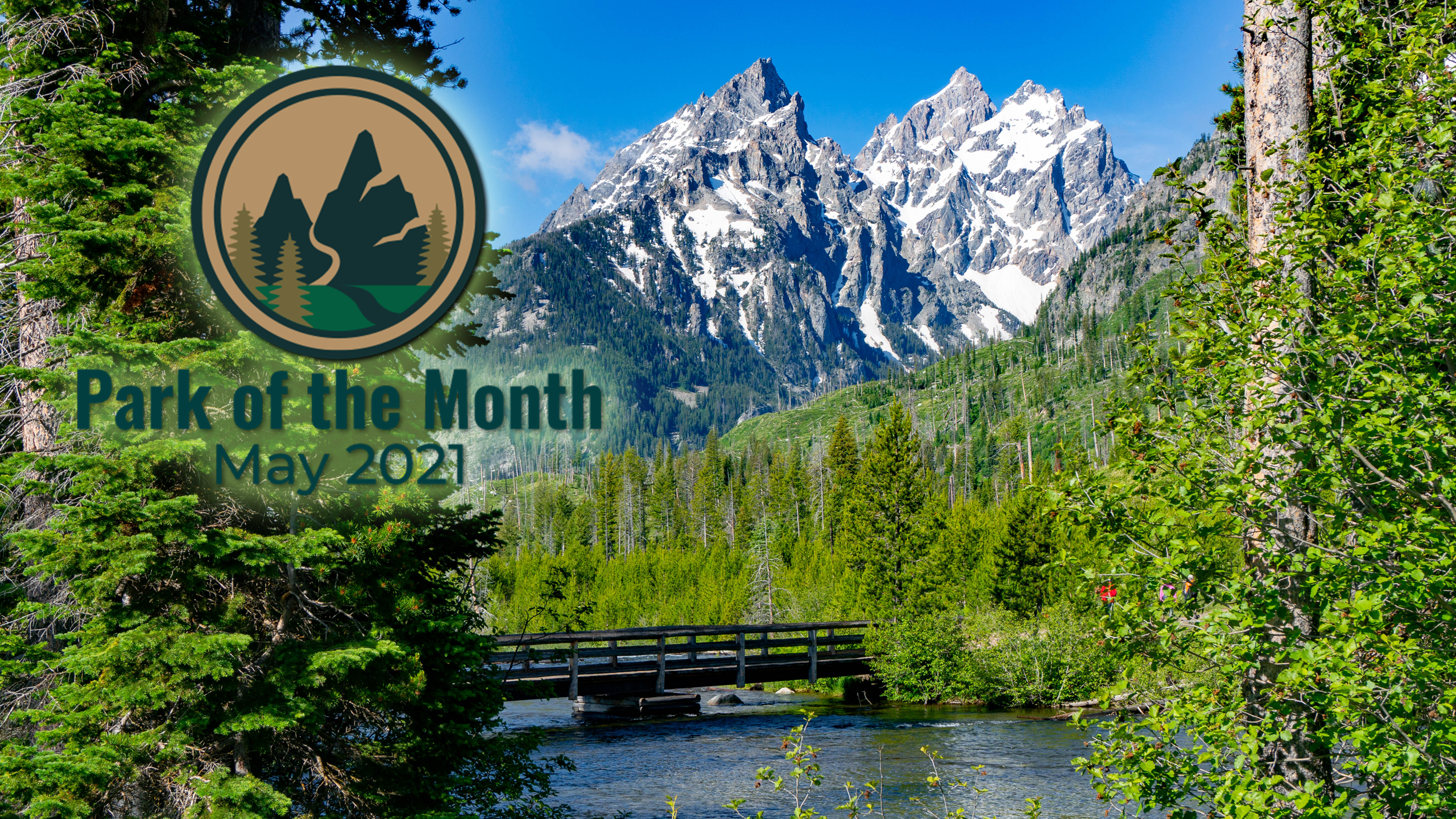Posted: May 6, 2021
Some links provided in this article are affiliate links. Meaning, at no additional cost to you, we’ll earn a commission if you click one and make a purchase. An easy way to help support us if you’re going to buy anyway!
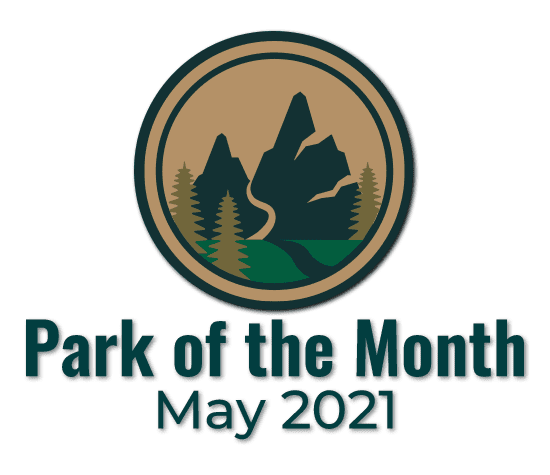
It’s time for our “May 2021 – Park of the Month”! Each month, Discover Our Parks will choose a “Park of the Month” to showcase on our site and why we choose to feature it. We will utilize comments, time of the year and other factors when making our decisions. We might even ask you, our adventurers, which park you think should be next.
Are you apart of the conversations about our Park of the Month’s? Join in on our Discord Server, it’s free!
Without further delay… what park gets May 2021’s “Park of the Month”???
Grand Teton National Park
Grand Teton National Park is a beautiful place that has been sculpted by many geological forces. The Teton Range towers over the valley of Jackson Hole, providing dramatic alpine scenery and drawing millions of visitors to Grand Teton National Park each year. Over billions of years, natural forces including earthquakes, glaciers and erosion have shaped this magnificent landscape.1
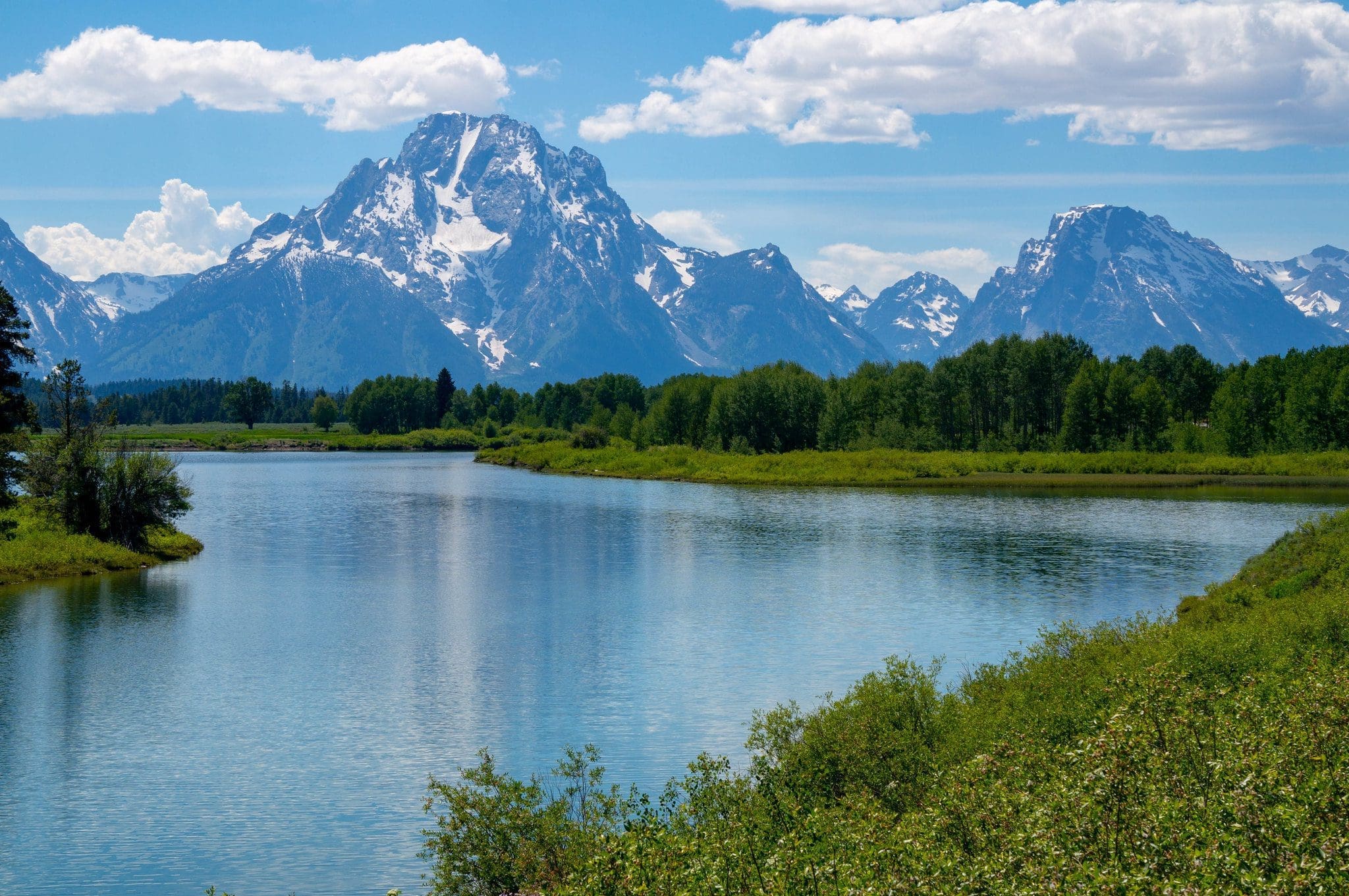
The Teton Range contains some of the oldest rocks in North America. A 2.7 billion-year old metamorphic rock called gneiss makes up much of the Teton Range. These rocks were formed when sea floor sediments and volcanic debris were buried up to 18 miles deep as two tectonic plates collided. The intense heat and pressure at these great depths changed or metamorphosed the sediments into today’s rocks, separating different minerals into lighter and darker layers.1
The Tetons are one of the youngest mountain ranges in North America. They have been uplifting for less than 10 million years, making them “adolescent” mountains, as compared to the “middle-aged” Rockies (50-80 million years old) or the “elderly” Appalachians (more than 300 million years old). Erosion has had much less time to work in the Tetons, comparatively, so their jagged peaks remain standing high.1
SPONSORED ADVERTISEMENT
The Teton Range uplifts one earthquake at a time along the 40-mile long Teton fault, a north-south trending crack in the earth’s crust. As the region stretches in an east-west direction, this stress builds to a breaking point and generates an earthquake, lifting the mountain block skyward while dropping the valley floor.1
On average, the fault moves about 10 feet in each earthquake: two to three feet up and four to six feet down. In the 10 million years since the fault began moving, the total offset is probably over 25,000 feet. As a quick estimate, the Flathead sandstone on top of Mount Moran is 6,000 feet above the valley and that same layer is buried roughly 20,000 feet below the valley floor on the east side of the fault.1
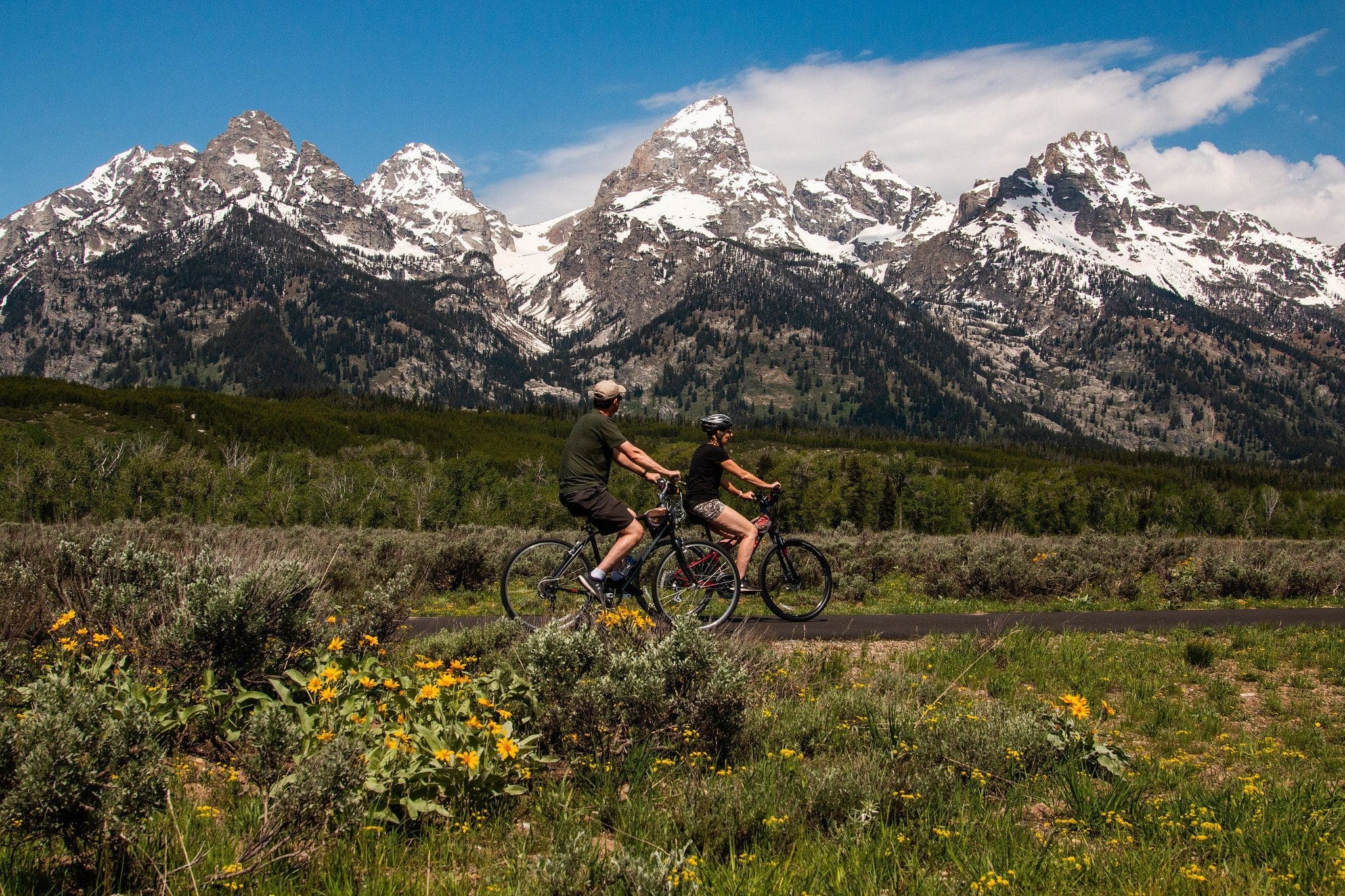
Glaciers also have a lot to do with the park we have today. Pleistocene Ice Age glaciers sculpted the Teton landscape over multiple glacial advances widening V-shaped river canyons into U-shaped glacial canyons, gouging out depressions filled by lakes today, sharpening high peaks, and filling the valley floor with outwash debris.1
The most recent advance, known as the Pinedale, lasted from roughly 50,000 to 12,000 years ago. Many hikers access the park’s high country by traveling up glacial canyons such as Cascade, Paintbrush, Death Canyon and Granite. Look for features like glacially polished bedrock as you hike through these areas.1
SPONSORED ADVERTISEMENT
Why “May 2021 – Park of the Month”?
This phenomenal National Park is only a stones through from the first national park, Yellowstone National Park. Many people who travel to one, take time to see both, but if you had to choose one to avoid crowds, Grand Teton National Park might be your better option. The park provides many unique adventurous activities for park visitors and learning about the natural aspects of the park, as well as the historical and cultural aspects, make this an unforgettable park to visit.
Few landscapes in the world are as striking and memorable as that of Grand Teton National Park. Grand Teton has a lot to offer, whatever your interests. Mountains, valleys, lakes, rivers, and skies are home to diverse and abundant forests, wildflowers and wildlife. The park also has a rich cultural history with old homesteads and cattle ranches to explore and photograph. Walk on a trail built by the Civilian Conservation Corps or one that American Indians or fur trappers might have used in the 1820s. Ride a bike or paddle a canoe. There is something for everyone.2
Below you will find our suggestions and tips for visiting this amazing park, including:
- Best Scenic Drives
- Boating & Floating
- Best Hikes (in our opinion)
- Climbing & Mountaineering
- Camping & Lodging Options
Some of the below locations or activities are currently not available due to COVID-19 restrictions. Visit our Grand Teton National Park page for more information on the status of the park in the COVID-19 Information bar.
SPONSORED ADVERTISEMENT
The Scenic Drives
Driving through Grand Teton National Park offers stunning views of the Teton Range, along with the opportunity to view wildlife. Many turnouts along park roads offer exhibits on park geology, wildlife, and plants. Turnouts also provide safe places to enjoy scenic views, view wildlife, and take photographs.3
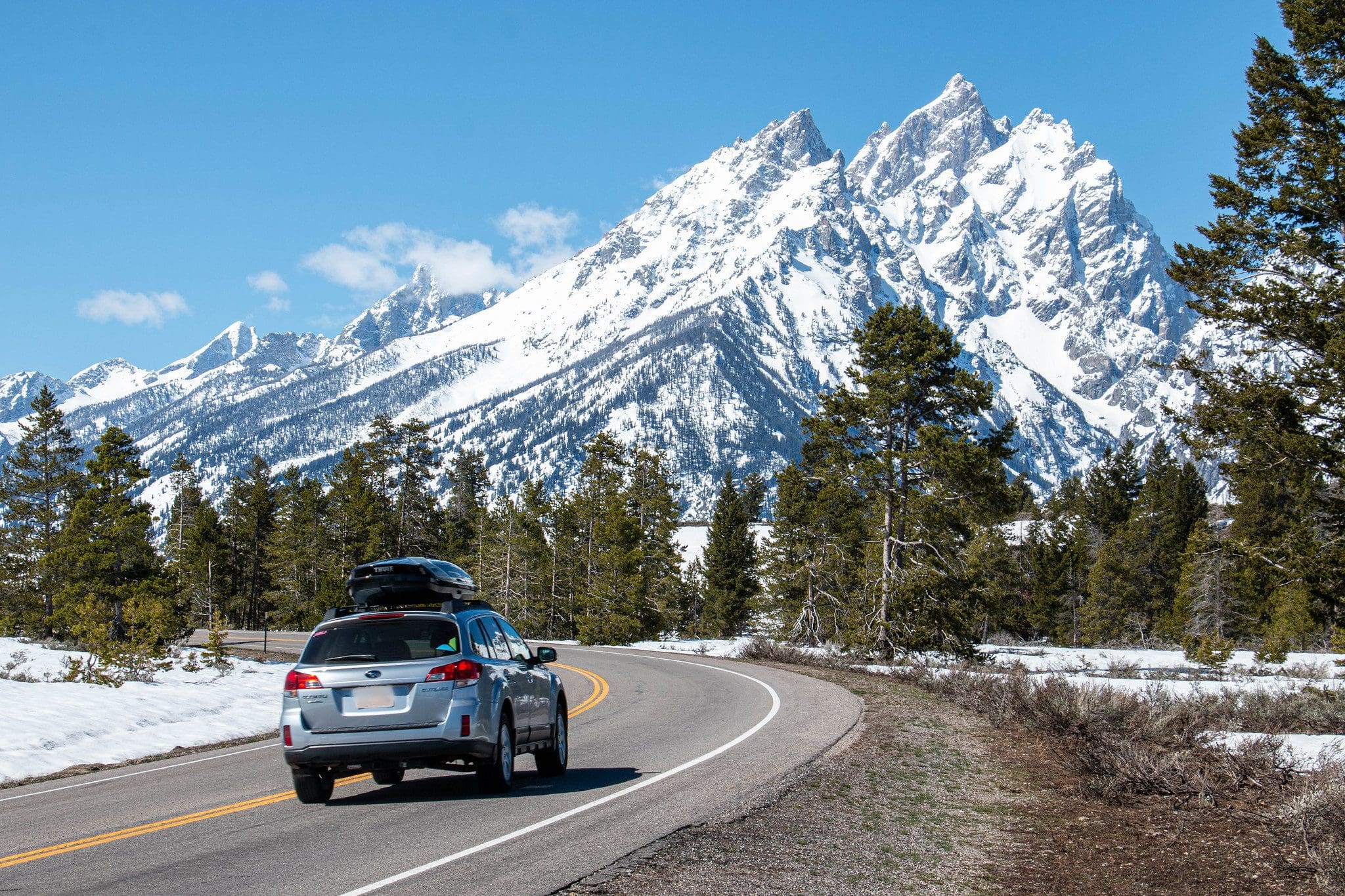
Probably the most popular scenic drive within the park is the Teton Park Road. This roughly 30 to 60 minute trip, depending on how many stops you make or wildlife you encounter, provides spectacular views of the amazing Teton Peaks within the park. Encountering wildlife is almost certain on this drive, so be sure to always follow signs and park rules when you want to observe or photograph them by pulling off into turnouts and overlooks.
This drive connects Moose with Jackson Lake Junction. Along the road are multiple pull-offs and overlooks. Trailheads such as Taggart Lake, Lupine Meadows, Jenny Lake, String and Leigh Lakes, and Signal Mountain can be accessed from the Teton Park Road.4
SPONSORED ADVERTISEMENT
Be sure not to miss the Jenny Lake Boat to Hidden Falls, a small ferry trip across Jenny Lake at the base of Mount Teewinot where you can then hike the short steep trail up to Hidden Falls.
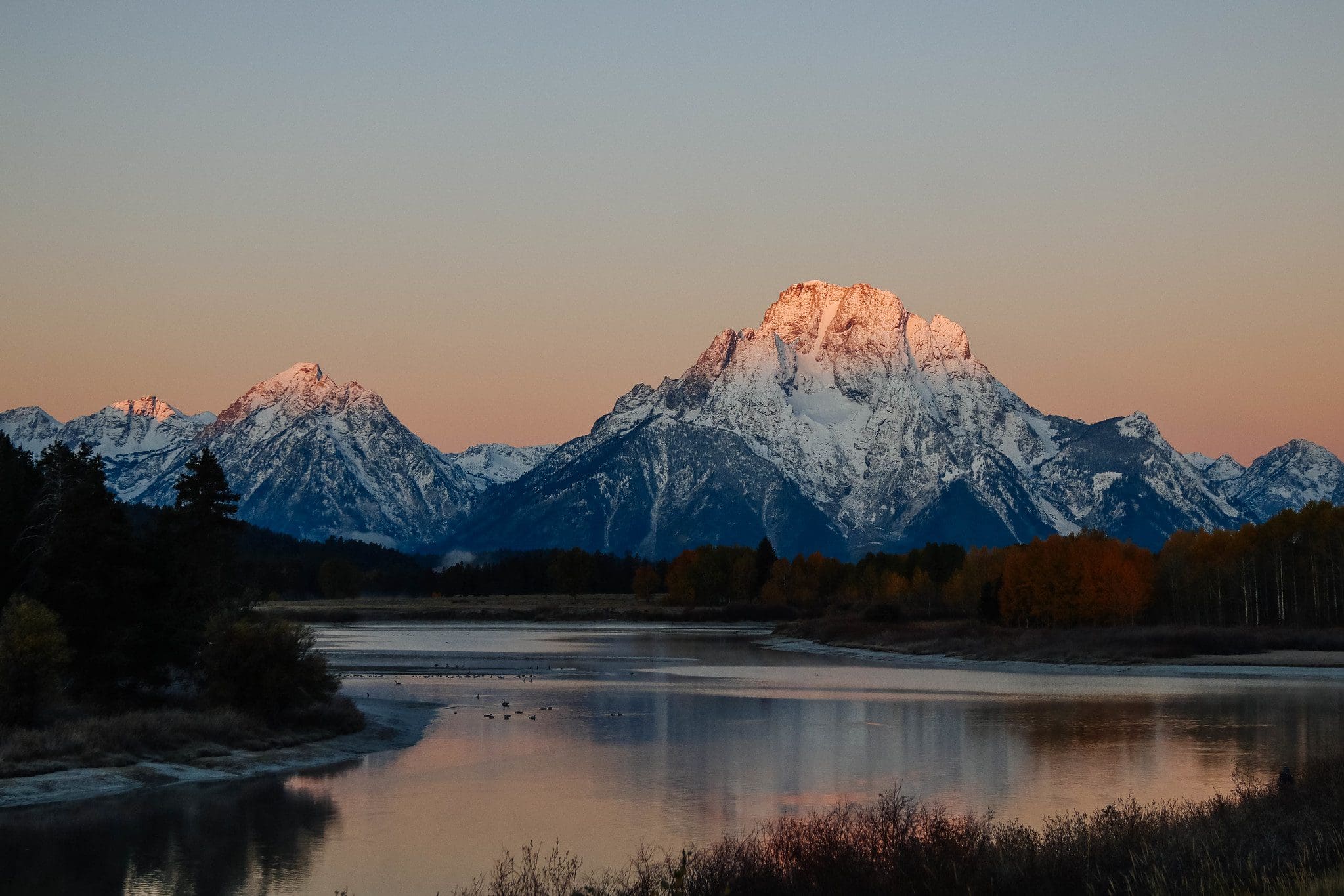
Another stop we suggest is Oxbow Bend. Oxbow Bend is home to a variety of birds and animals, including pelicans, Great Blue Herons, muskrats, otters, moose, and bear. On calm days, Mount Moran can be seen reflected on the surface of the water. Oxbow Bend is a popular area to view sunrise or sunset, and is visited by photographers hoping to capture the river and Teton Range.5
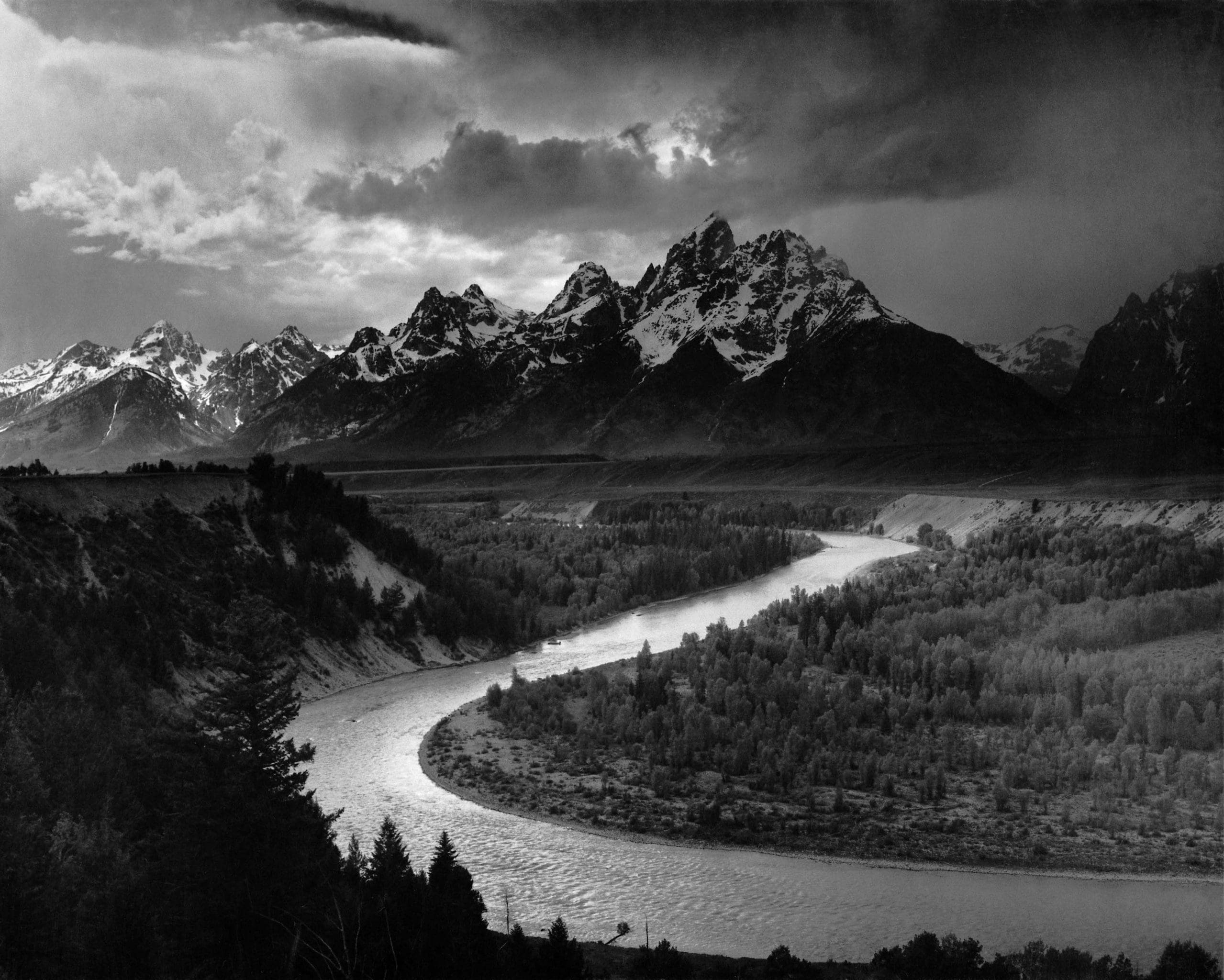
Lastly another stop not to miss, and very iconic, is the Snake River Overlook. Ansel Adams photographed this iconic view of the Teton Range and Snake River from roughly this vantage point. The sweep of the Snake River below the sagebrush flats and the high peaks of the Teton Range towering above enthrall all who visit. Today visitors try to capture this image forgetting that trees have grown and the exact location is not known. Below this point, rafters access the Snake River at Deadmans Bar coming downstream from Pacific Creek or continuing on to Moose.6
For more information on the Teton Park Road Scenic Drive, visit the NPS page about it here.
SPONSORED ADVERTISEMENT
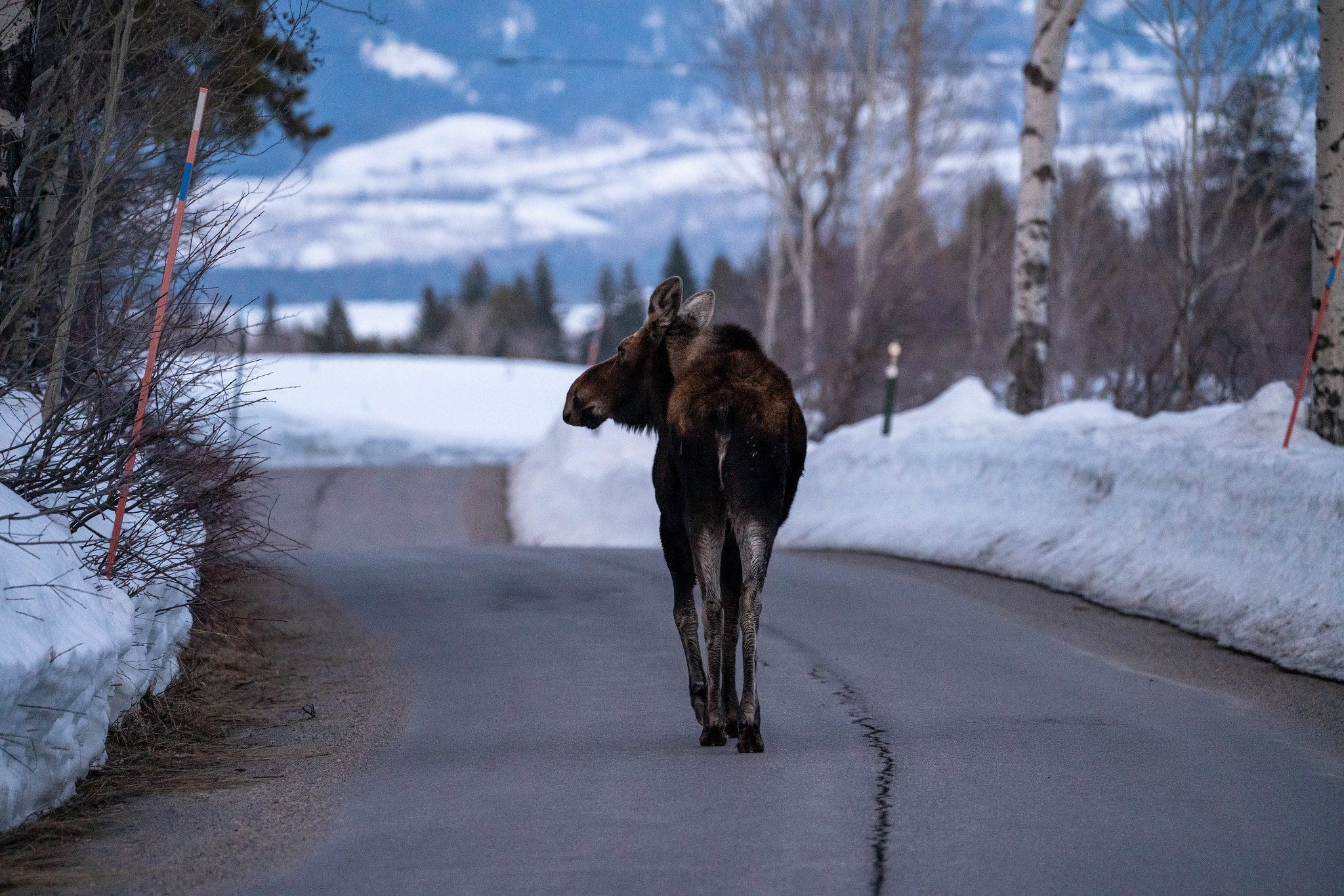
Our next scenic drive suggestion is the Moose-Wilson Road. It may be obvious to some, but this drive connects the small towns of Moose & Wilson and is roughly a 20 to 60 minute scenic drive, again depending on the length of your stops and any wildlife encounters. The road winds through forest and marsh habitats, and is home to various species of wildlife. The Moose-Wilson Road provides access to the Laurance S. Rockefeller Preserve, and the Granite and Death Canyon Trailheads.7
Make sure not to miss stopping by the Laurance S. Rockefeller Preserve Center, which offers an opportunity to learn more about Mr. Rockefeller’s vision for the Preserve and his legacy of conservation stewardship. The center will orient you to the area and offers a series of unique sensory exhibits that highlight the visual, auditory, and tactile qualities of the Preserve’s plants and wildlife. Learn about the innovative design techniques and features that make the center a model for energy and environmental design.8
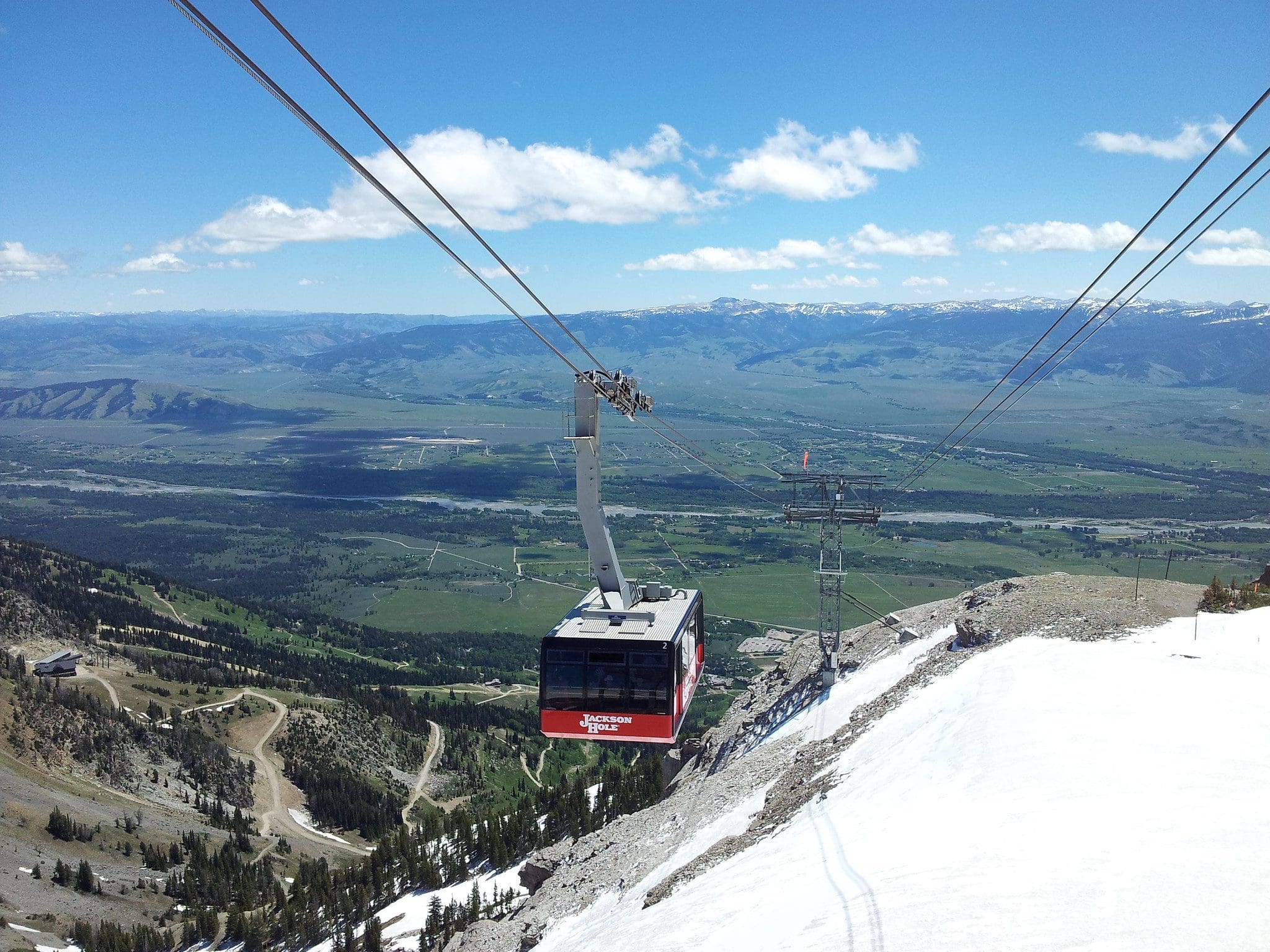
Another attraction not to miss is located typically where most people begin this drive or end it, at Teton Village. Here you can enjoy the Jackson Hole Mountain Resort Aerial Tram. The aerial tram whisks hikers up 4,139 vertical feet in 15 minutes to the summit of Rendezvous Mountain at 10,455 feet. You can then either ride the tram back down after enjoying the views, or if you are up for an enjoyable downhill hike, take one of the numerous trails back down to the start.9
For more information on the Moose-Wilson Road Scenic Drive, visit the NPS page about it here.
Looking for other scenic drives? See them all on this NPS page here.
SPONSORED ADVERTISEMENT
Boating & Floating
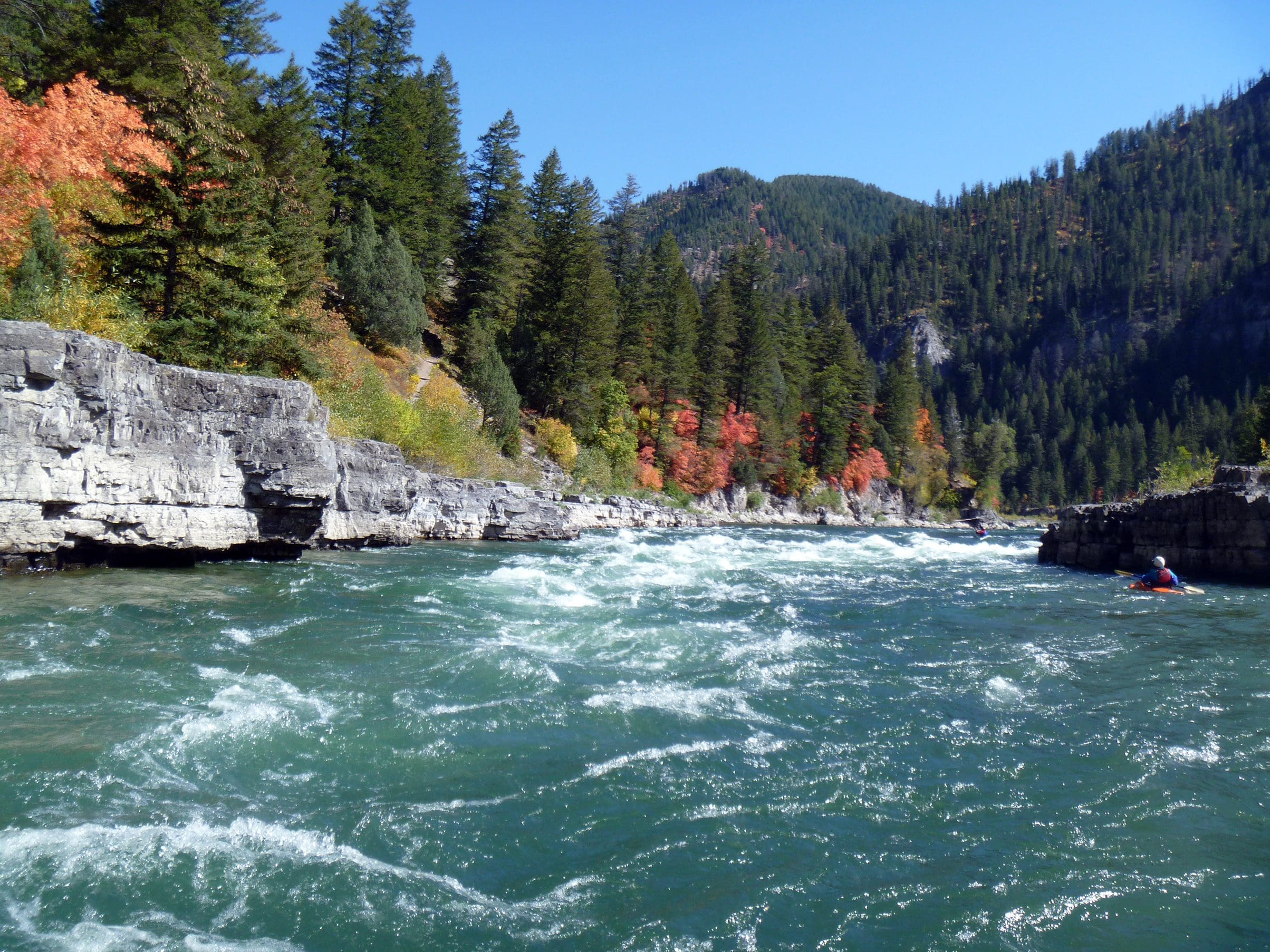
Grand Teton National Park offers multiple opportunities to boat or float. With numerous lakes for boating and the iconic Snake River for adventurous paddlers/floaters, the park provides a great way to observe nature from a different perspective.
If you are looking to float, the Snake River flows through the park and features world-class fishing, unparalleled wildlife viewing, and mild rapids depending on time of year. The headwaters of the wild and scenic Snake River are on the boundary between Yellowstone National Park and the Teton Wilderness. Floating the river is complex. A tangle of channels and constantly shifting logjams require boaters to anticipate their routes well in advance. Accidents are common.10
SPONSORED ADVERTISEMENT
Spring flows are very cold, fast, and muddy, making the river more difficult. As snowmelt diminished, volume decreases and water clears. In spite of reduced flow, the current remains deceptively powerful. Strong, upstream afternoon winds may slow your pace.10
The river has multiple areas with different levels of difficulty. Being prepared and having a trip plan is crucial for a safe trip. Only human-powered rubber rafts, canoes, dories, and kayaks are permitted on the Snake River within the park and parkway. All other waters within the park and parkways are closed to watercraft, including Pacific Creek, Cottonwood Creek, Buffalo Fork, and the Gros Ventre River.10
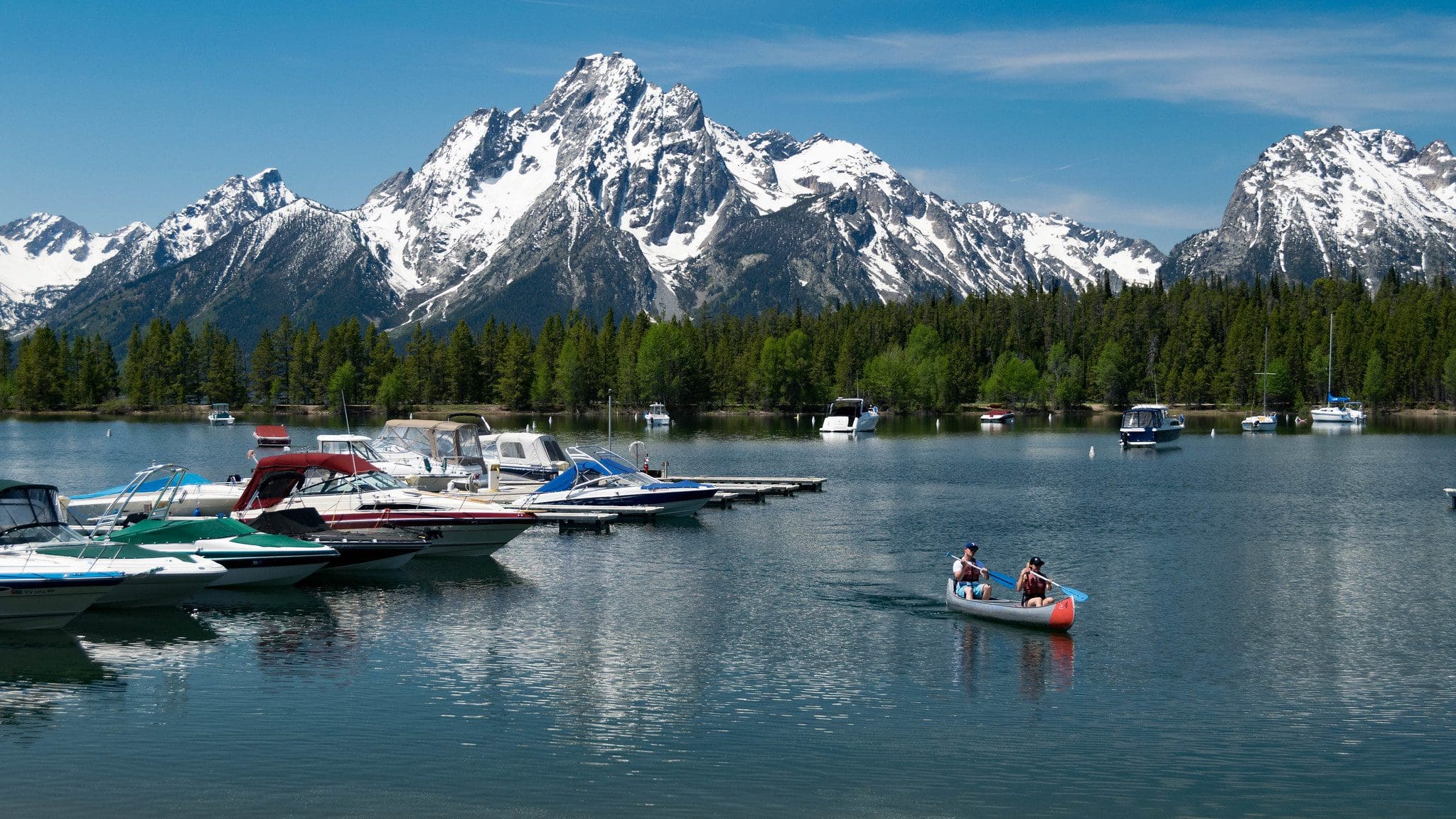
If you are a sailor or motor boat fan, Grand Teton National Park has several lakes that allow both. Motorboats are permitted on Jenny (10 horsepower maximum) and Jackson lakes. Human-powered vessels are permitted on Jackson, Jenny, Phelps, Emma Matilda, Two Ocean, Taggart, Bradley, Bearpaw, Leigh, and String lakes. Sailboats, water skiing, and windsurfers are allowed only on Jackson Lake.10
The park has rules and regulations set in place for both floating the river and boating on any lakes. Be sure to read them all and understand any risks. The park also requires a permit for all types of boating & floating activities. Learn more about all of these, approved outfitters and more by visiting the NPS page about it here.
You can also read more in these two brochures: Floating the Snake River & Boating.
For more detailed information, the best paddling and boating trips, we totally recommend grabbing a copy of
Paddling Yellowstone and Grand Teton National Parks (Paddling Series):
SPONSORED ADVERTISEMENT
Hiking
Grand Teton National Park, our May 2021 – Park of the Month, has numerous wonderful hikes for the laidback easy hikers to the adventurous backcountry hike. Below are our suggestions for some amazing hikes (more than we’ve ever suggested for a park, because there are so many amazing ones to choose)!
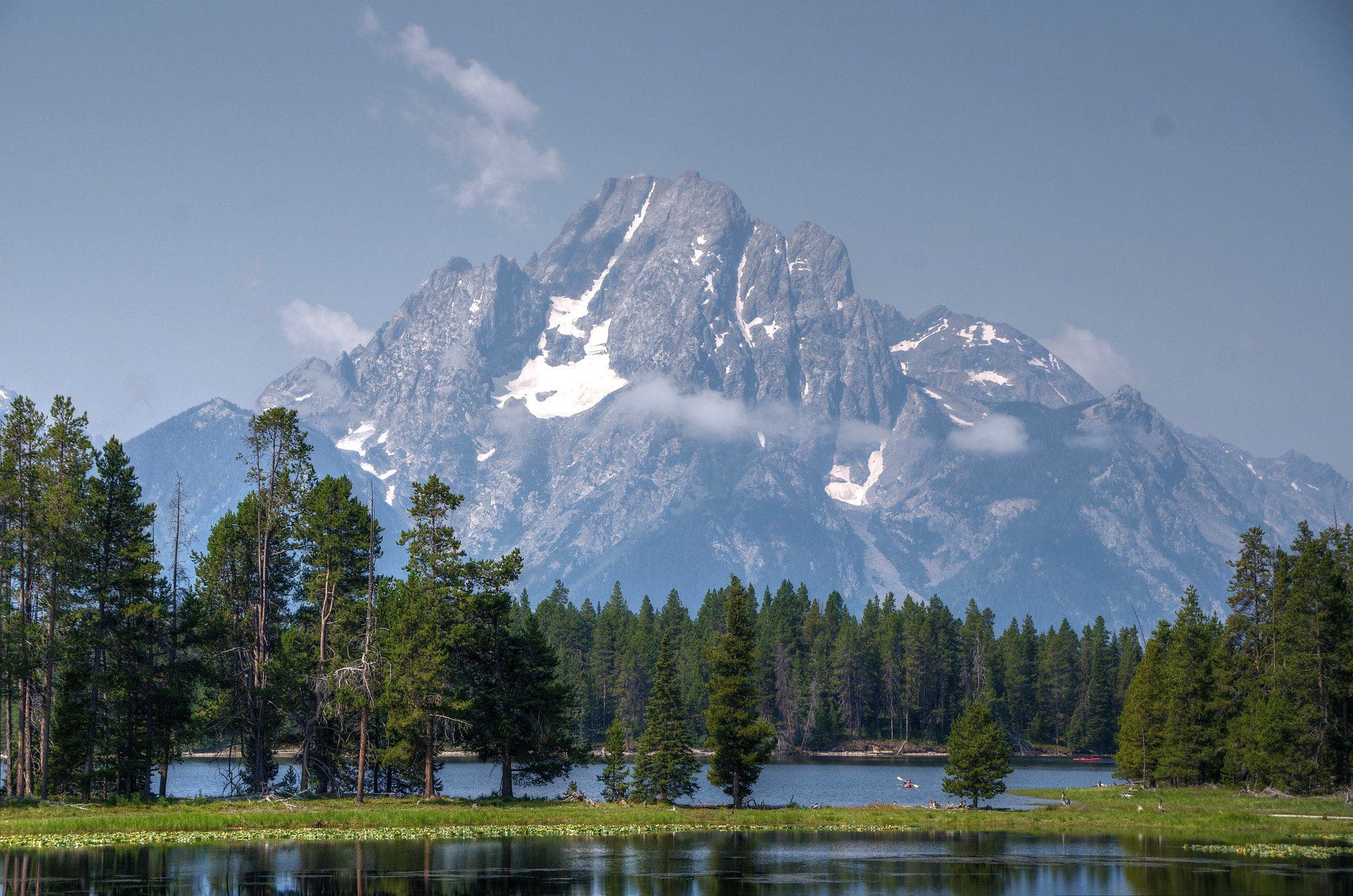
Our first suggestion is the Hermitage Point Trail. Those looking for a longer, but still relatively easy hike, will enjoy traveling to Hermitage Point. This easy to moderate 9.7 mile, 4 to 5 hour round-trip hike, begins near Colter Bay on Jackson Lake and traverses rolling terrain through forests, meadows, and wetlands. Once at the point, hikers will be greeted by views of Jackson Lake and the Teton Range.11
For more information about this hike, check out the NPS page here.
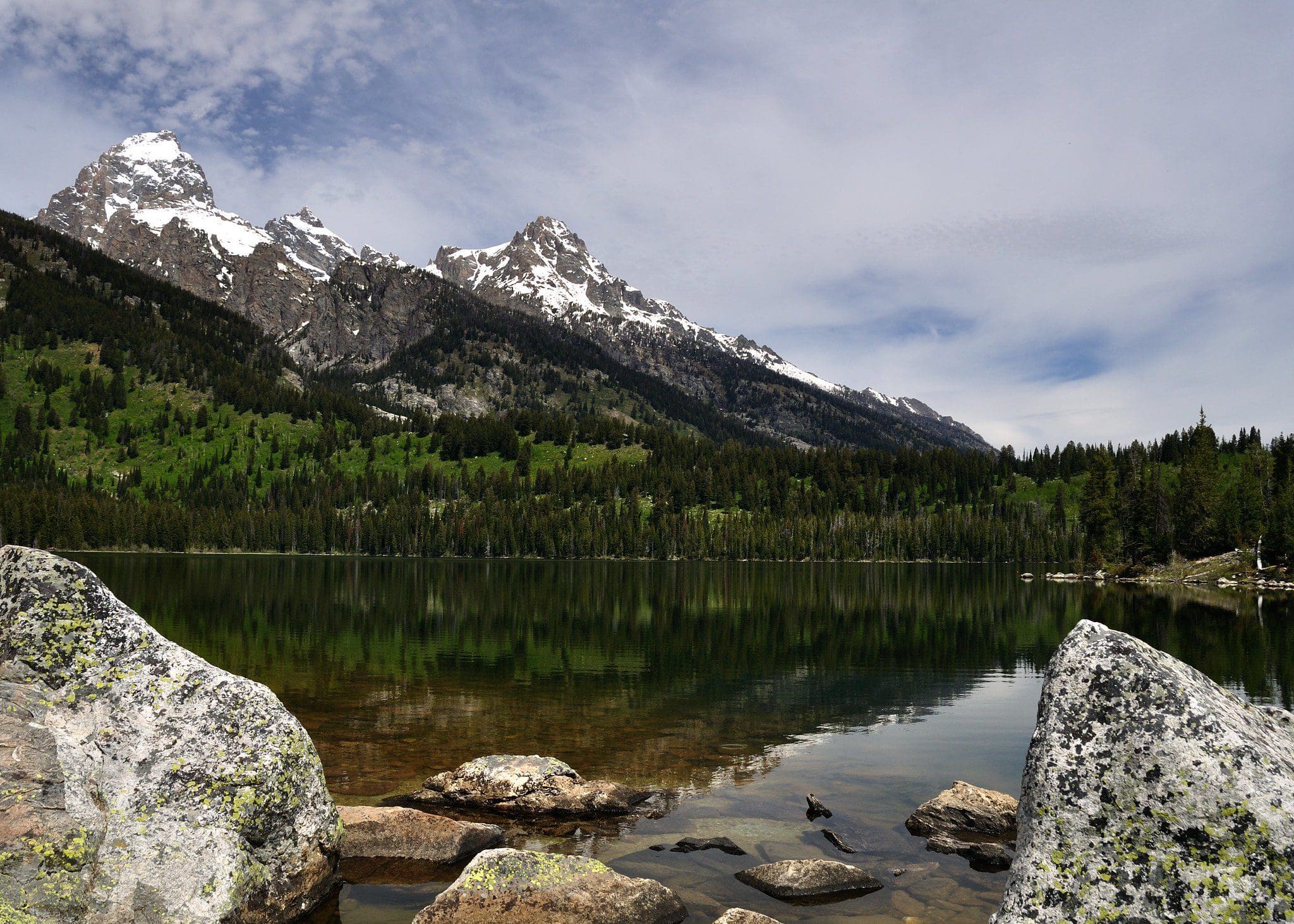
Our second suggested hike is the Taggart Lake – Bradley Lake Loop. This moderate 5 mile, 2 to 3 hour round-trip hike takes hikers to two alpine lakes. Leaving from the Taggart Lake Trailhead, hikers will wind up an aspen-covered moraine before the trail opens up to views of the Tetons. At the Bradley Lake trail split, follow the trail right to Bradley Lake. From Bradley Lake, follow signs to Taggart Lake and complete the loop back to the parking lot. Hikers will find spectacular views of two alpine lakes with the Teton Range behind.12
For more information about this hike, check out the NPS page here.
SPONSORED ADVERTISEMENT
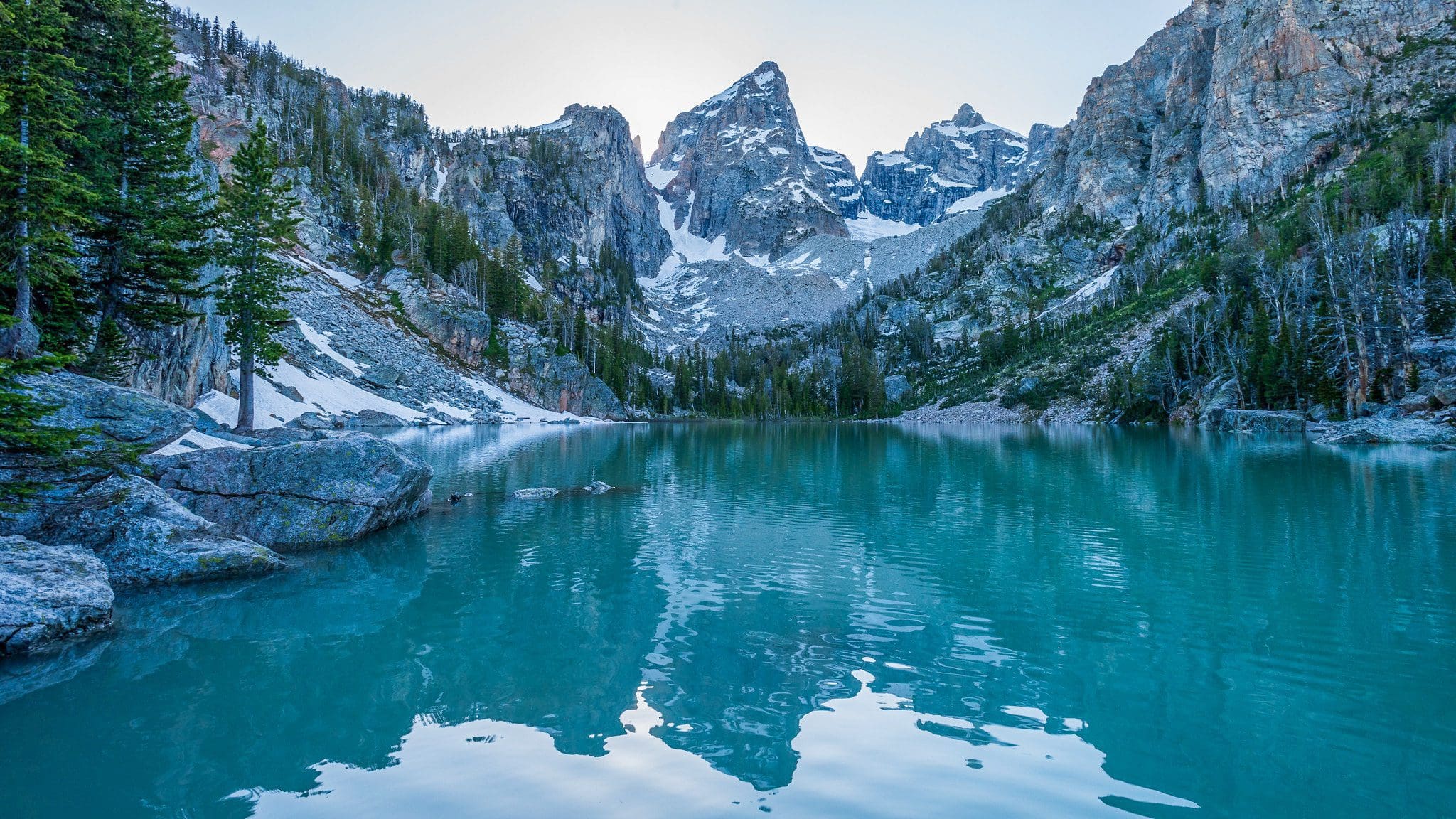
Next on our hiking list is for the truly adventurous and is the Surprise and Amphitheater Lakes Hike. This 10.1 mile, 6 to 8 hour round-trip hike gains 3,000ft in elevation to two beautiful alpine lakes. Start the hike at the Lupine Meadows Trailhead, which provides beautiful views of lush meadows.13
The trail switchbacks up the mountains for five miles, before reaching Surprise Lake. From there, it’s another quarter mile on to Amphitheater Lake. Both lakes offer views of the surrounding peaks, with Amphitheater being situated just below the summit of Disappointment Peak.13
This trail can be hazardous for those not acclimated to high altitude. The best cure for altitude sickness is to retreat to a lower elevation and not push yourself.
For more information about this hike, check out the NPS page here.
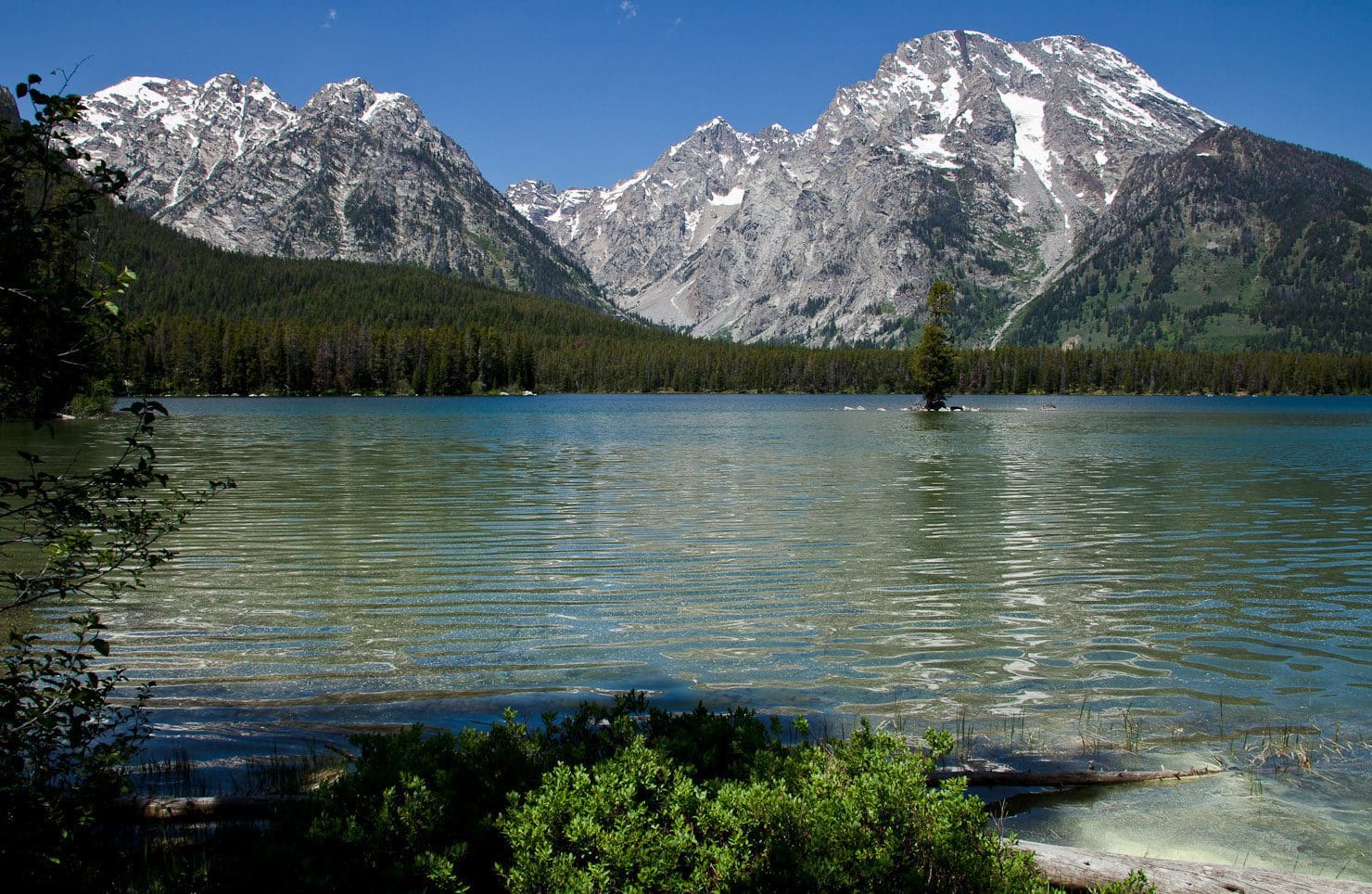
Our next suggestion is Leigh Lake Trail. This 1.8 mile, 1 to 2 hour round-trip hike along the eastern shore of String Lake and beyond brings you to the southern end of Leigh Lake, accessible only by trail or by non-motorized boat. This allows for quieter, less populated lake and mountain views on a relatively flat, easy trail. For a longer hike, head further down the eastern shore of Leigh Lake, providing more beach access and less obstructed views.14
Some people say this is the best lake for boating because it is more peaceful and less crowded, compared to the other park lakes along the roads.
For more information about this hike, check out the NPS page here.
SPONSORED ADVERTISEMENT
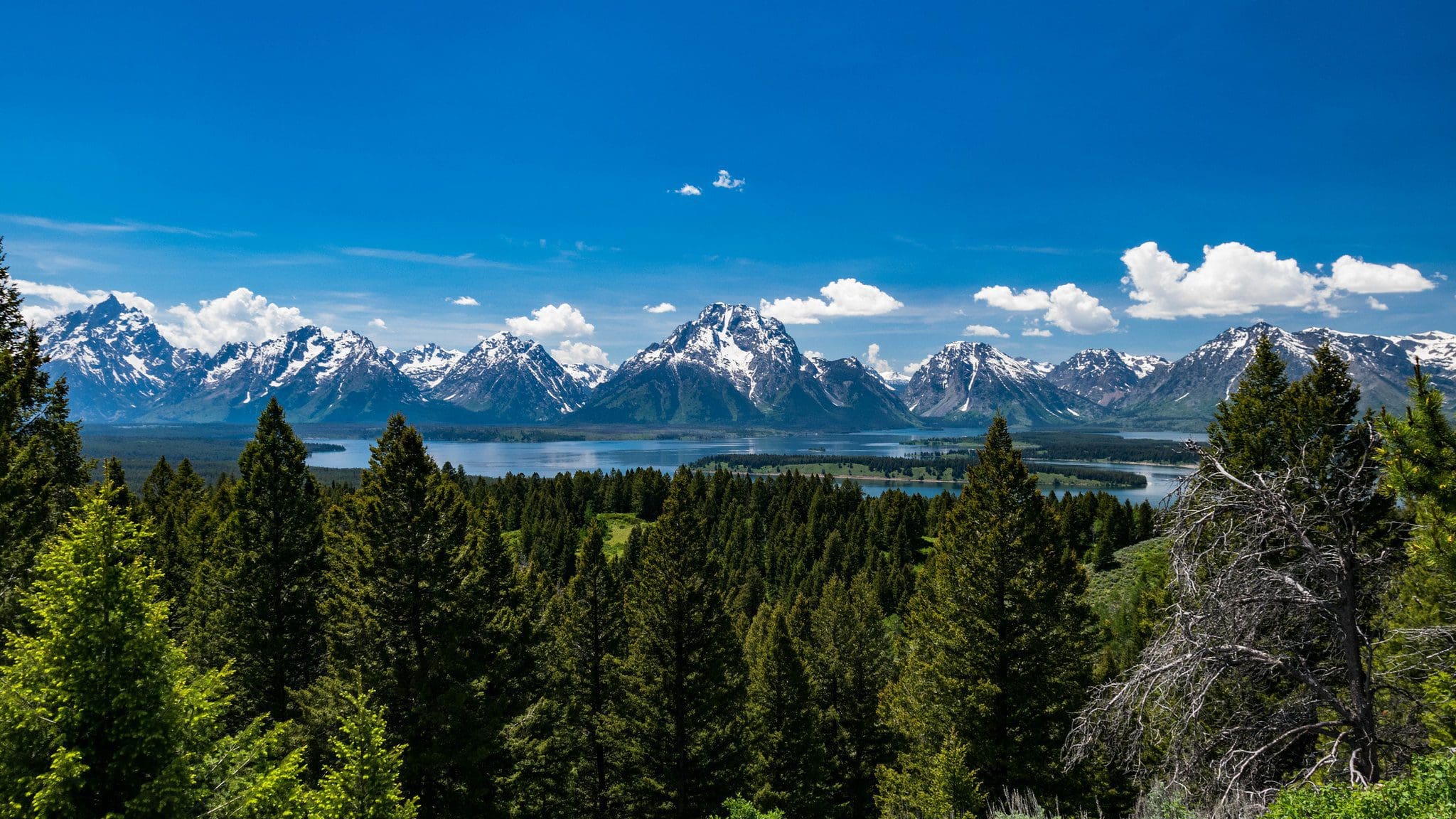
Next up is the Signal Mountain Trail. This 6.8 mile, 3 to 4 hour round-trip hike is up Signal Mountain for spectacular views of the Teton Range and Jackson Hole.15
Starting from the Signal Mountain Lodge, cross the Teton Park Road and follow the signs to the trailhead. From there, the trail winds upwards through the forest to the summit of Signal Mountain where they will be met with panoramic views of the Teton Range and Jackson Hole. Hikers will follow the same trail back down to the lodge.15
For more information about this hike, check out the NPS page here.
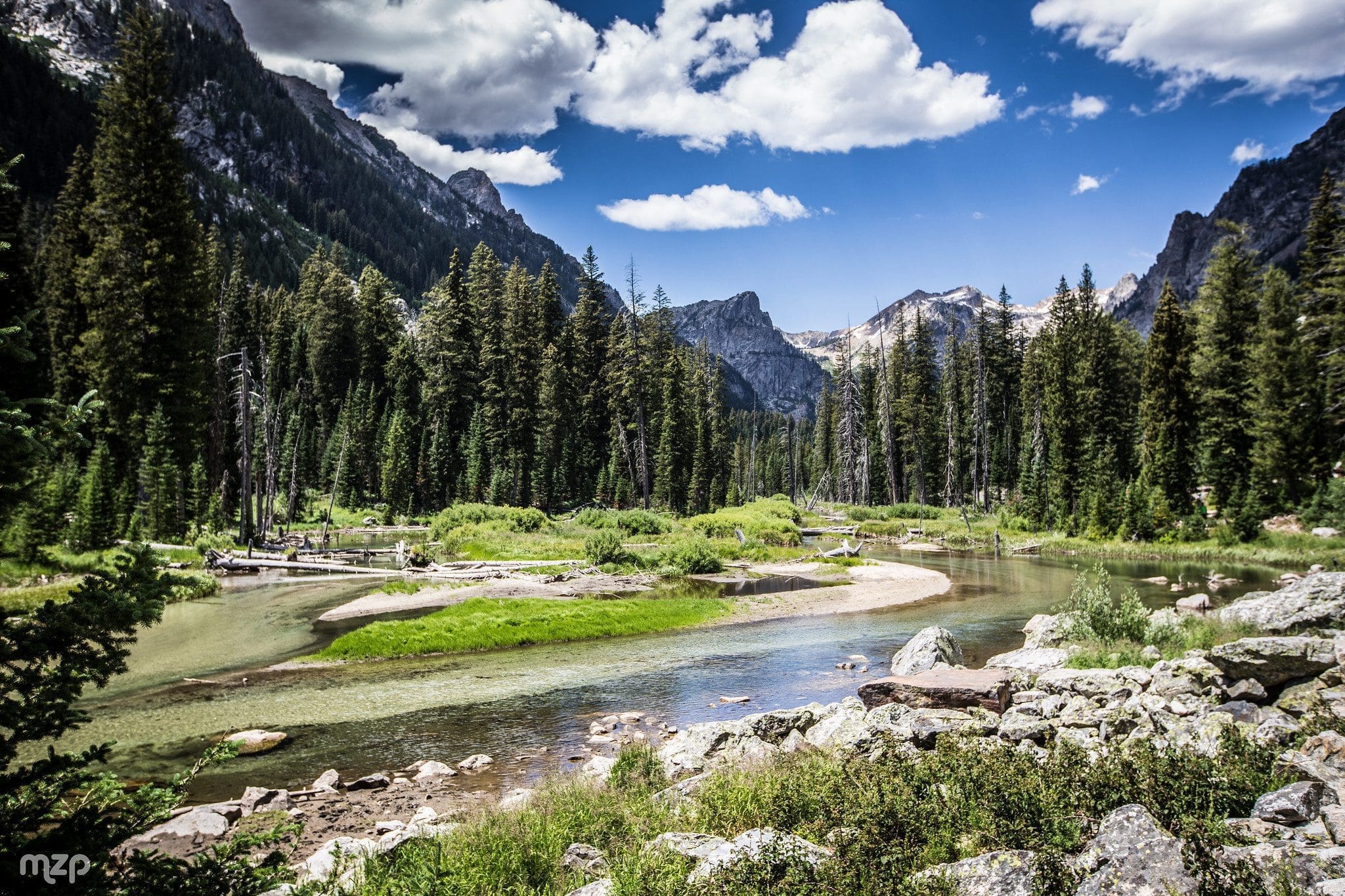
Our last suggestion, is a great option if you are interested in a longer overnight hike. See more about backpacking in the Camping & Lodging section below. But it also has opportunities for longer day hikes.
This suggestion is a collection of hikes in and around the Forks of Cascade Canyon Trail. This main trail, is an 8.8 mile, when you take the Jenny Lake Ferry, or a 14.6 mile, 5 to 8 hour round-trip moderate to strenuous hike into Cascade Canyon, a glacially carved u-shaped canyon, passes between Teewinot and Mount St. John to provide easy access into the Teton backcountry.16
This out-and-back trail is a popular option with visitors who want to get into the mountains without gaining a significant amount of elevation. While following Cascade Creek, the trail provides spectacular views of the surrounding peaks, including the Grand Teton, Mount Owen, and Teewinot.16
SPONSORED ADVERTISEMENT
This trail also provides an opportunity to spot wildlife like moose and bears, as well as some of our alpine species like pika. While the trail continues 4.4 miles (7.1 km) back into the canyon before splitting, you may stop and find a turning point at any time, making the trail as long or as short as you would like.16
If you do decide to take on the whole trail, and make it to the Forks of Cascade Canyon, you have several options if you want to keep going. For those looking for solitude, continue left or South on the Teton Crest Trail, where you can turn back at any point but get some amazing views!
Otherwise, head north on the Lake Solitude Trail. From the fork, hikers will climb about 1,500ft over the next 2.7 miles to arrive at Lake Solitude. From here, hikers may turn around to make this a 14.2 mile (with ferry) or 20 mile, 8 to 12 hour strenuous out-and-back day hike. The trail does continue from Lake Solitude and you can make an even longer round-trip hike through Paintbrush Canyon.17
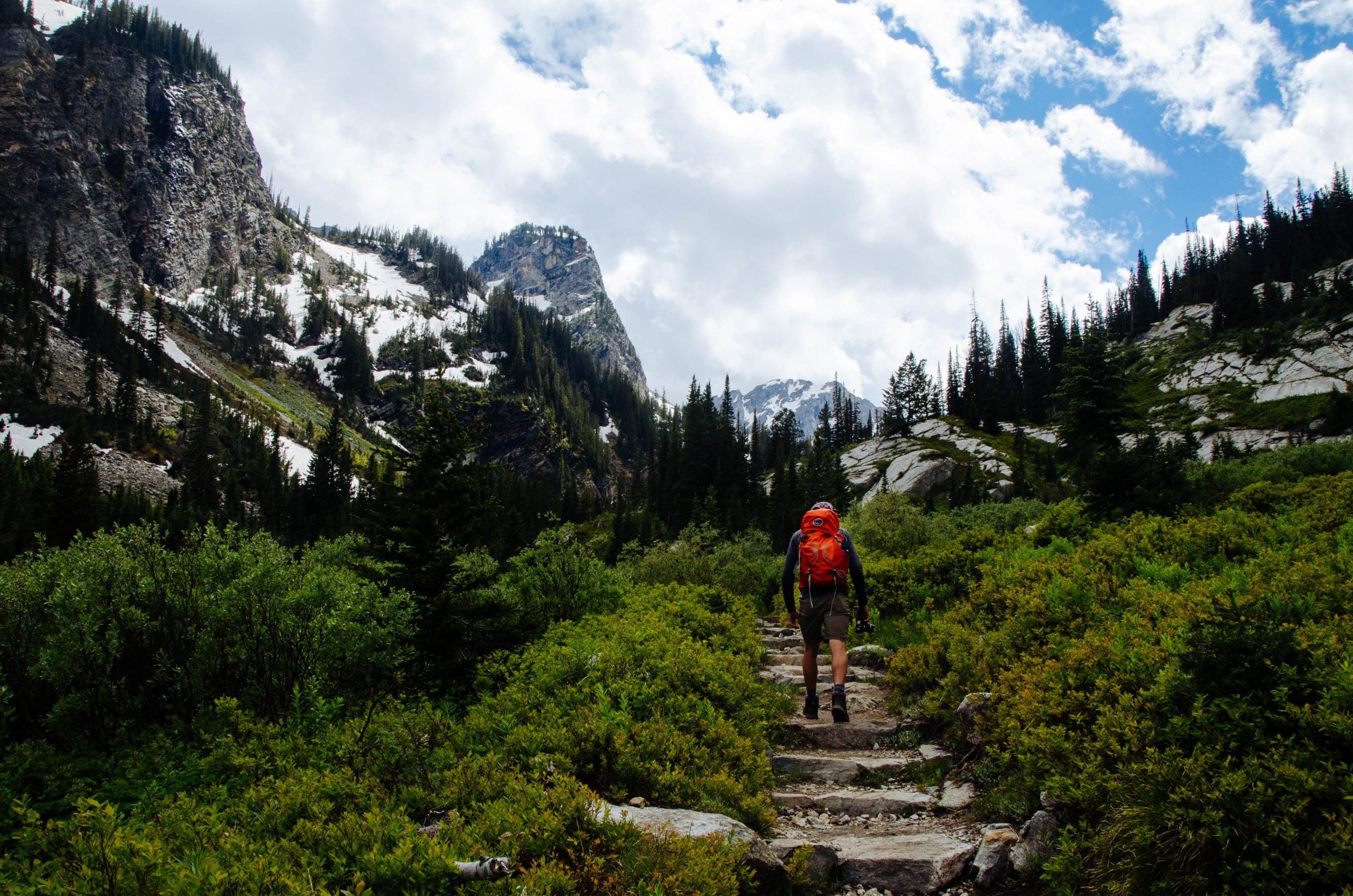
If you combine these hikes to make the Paintbrush Canyon – Cascade Canyon Loop, you’re looking at a 19 mile, 10-12 hour very strenuous hike which is suggested to go the opposite direction coming out through Cascade Canyon.
This hike offers some of the most spectacular views in the park, with the 10,700ft Paintbrush Divide offering panoramic views of Mount Moran, Mount Woodring, and Rockchuck Peak. From Lake Solitude, hikers have a direct view of the Grand Teton and Mount Owen. Hikers should plan on a full day to hike the loop.18
SPONSORED ADVERTISEMENT
Before attempting the loop, stop by the Jenny Lake Ranger Station to speak with a ranger about conditions on Paintbrush Divide, as the divide often holds snow until mid-July and can be dangerous if attempted without the proper snow equipment.18
Not that you haven’t been given a lot of options around Cascade Canyon, but if you are there and doing one of the shorter hikes, we also suggest checking out Inspiration Point.
For more information about the Forks of Cascade Canyon Trail hike, check out the NPS page here.
For more information about the Lake Solitude Trail hike, check out the NPS page here.
For more information about the Paintbrush Canyon – Cascade Canyon Loop hike, check out the NPS page here.
For more amazing hiking (and even biking) trails, we totally recommend grabbing a copy of
Hiking Grand Teton National Park: A Guide to the Park’s Greatest Hiking Adventures:
Be sure to check out the NPS Hiking at Grand Teton page here for even more amazing hikes!
SPONSORED ADVERTISEMENT
Climbing & Mountaineering
Our May 2021 – Park of the Month has some great climbing opportunities for fellow adventurous types!
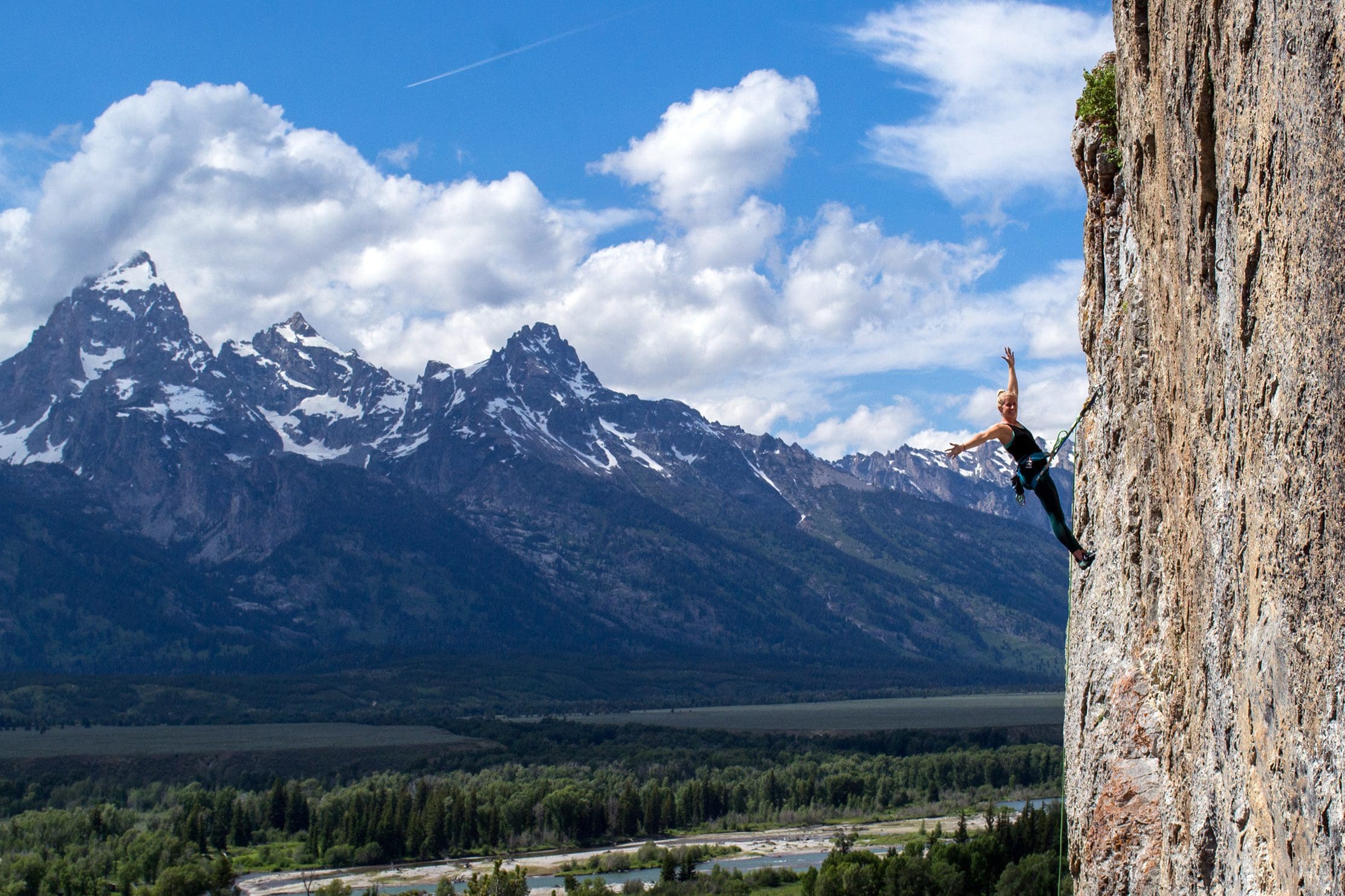
The Teton Range offers some of the most accessible and diverse climbing in the country. The wide array of rock, snow and ice, and mixed routes range from easy outings to very difficult undertakings.19
There are many inherent risks and hazards associated with all forms of climbing and mountain travel. Risks include: lightning, rockfall, avalanches, crevasses, and extreme weather conditions (even during the summer months). A fall on steep snow and failing to self-arrest with an ice axe is the number one cause of accidents and deaths.19
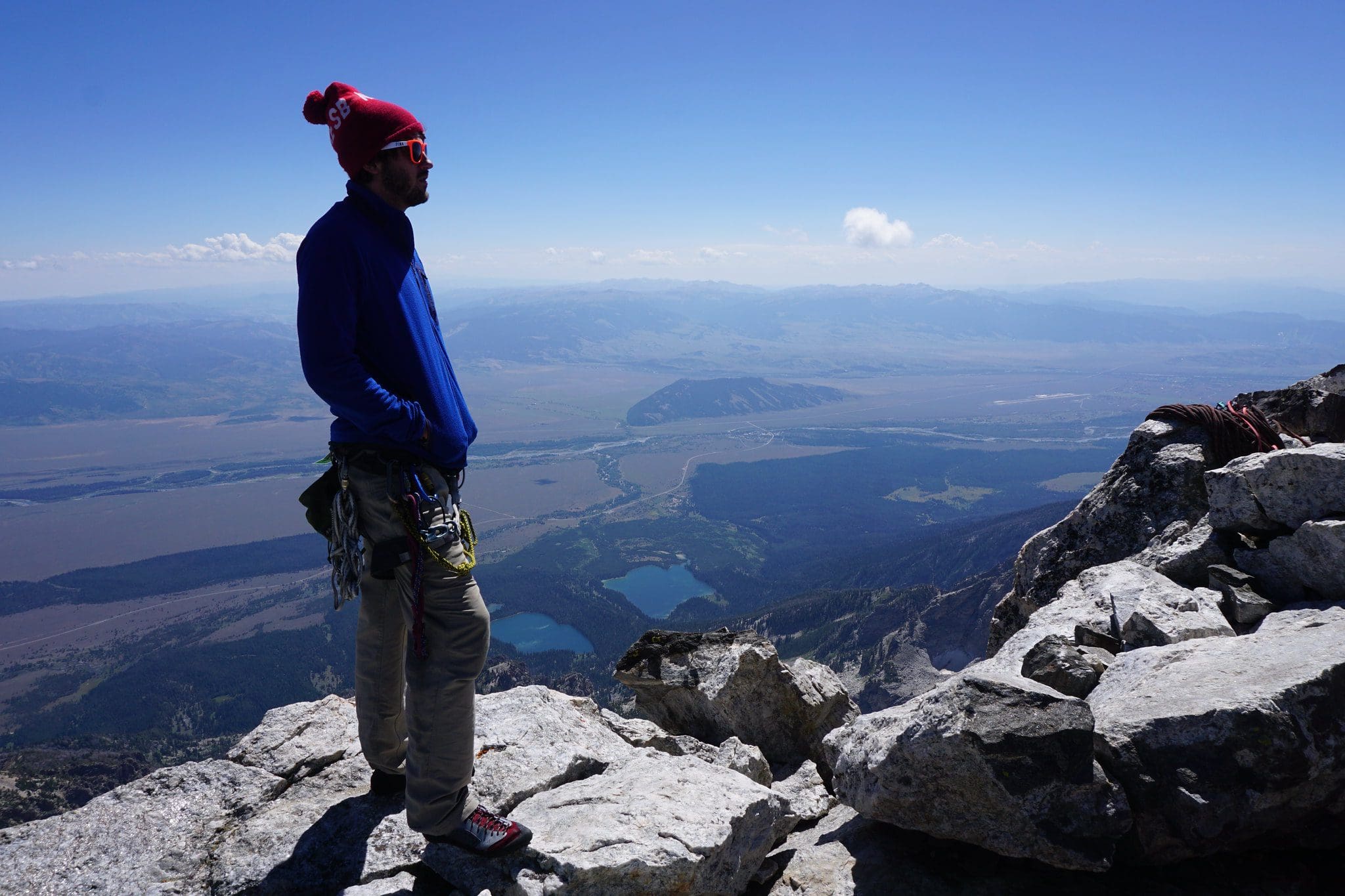
If you are planning to do climbing or mountaineering, be sure to read all the rules and regulations set forth within the park for your safety and others. A climbing permit is not required for mountaineering, but climbers on overnight trips must have a backcountry camping permit to camp or bivouac. All Garnet Canyon permits and any trip involving technical climbing and mountaineering must be picked up at the Jenny Lake Ranger Station from June-September.
If you plan to go climbing, we recommend grabbing a copy of
Best Climbs Grand Teton National Park: A Guide to the Area’s Greatest Climbing Adventures (Best Climbs Series):
For more information about climbing & mountaineering within Grand Teton National Park, visit the park climbing page here.
SPONSORED ADVERTISEMENT
Camping & Lodging
Our May 2021 – Park of the Month pick has numerous options for staying overnight within the park. From lodges, cabins, ranches, campgrounds and backcountry trips, this park is made for an adventure no matter your style of visiting!
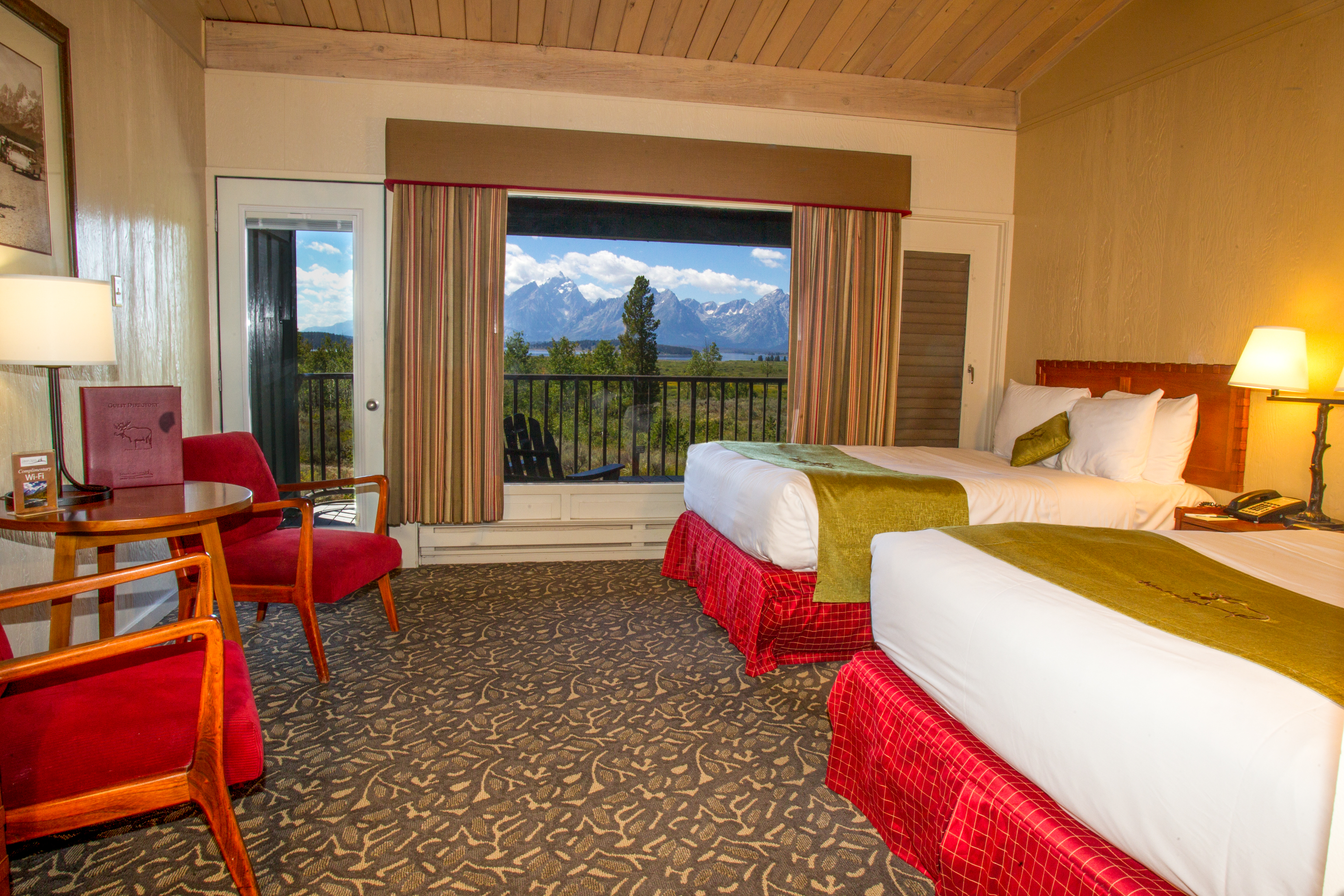
With 7 different lodging options, ranging in types of stay from a modern hotel or motel type room, lodging in a rustic cabin, or even a tent cabin. Our recommendation and one of the top places to stay is the Jackson Lake Lodge. The lodge provides a beautiful escape within a vast wilderness. The lodge is a full-service, eco-hotel with 385 rooms including stunning suites, main lodge hotel rooms, and quiet cottages.20
The lodge also includes a variety of dining options, outdoor excursions, meeting space, retail shops, a swimming pool, and an exhibit featuring Native American artifacts and Western art. A complimentary guest shuttle is also available to Colter Bay, Jenny Lake, and the town of Jackson.20
Learn more about Jackson Lake Lodge here.
Other lodging is available in the park, including Jenny Lake Lodge, Colter Bay Cabins and Signal Mountain Lodge, to name a few. Learn more about all the other lodging locations here.
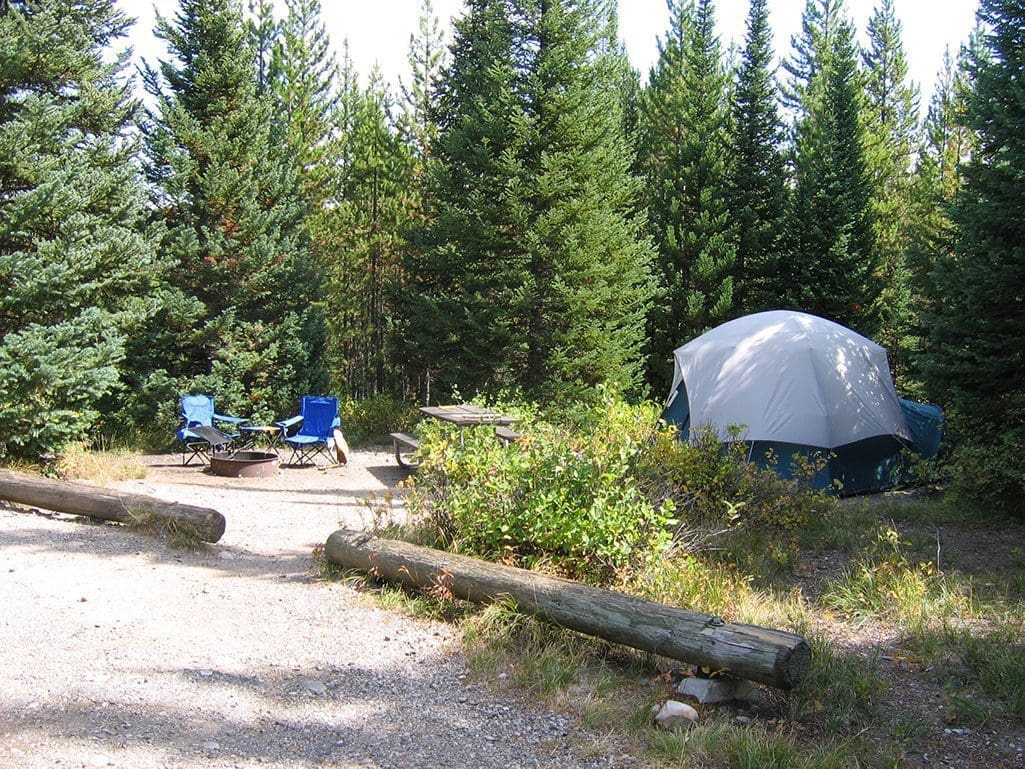
If you are looking for campgrounds, Grand Teton National Park has plenty of options. Here are two suggestions for you to consider.
Our first is great whether in a tent or an RV. Colter Bay Campground is a large campground in a lodgepole pine forest near Colter Bay Village. While not on the shores of Jackson Lake, a short stroll leads to a spectacular view of Mount Moran and the northern Teton Range.21
Colter Bay Village has many facilities including a visitor center, restaurants, stores, cabins, and marina. Shower and laundry services are available for additional fee. Departing from the nearby Hermitage Point Trailhead, hikers traverse forests and sagebrush meadows enjoying the Teton landscape.21
For more information on Colter Bay Campground, check out the Discover Our Parks page about it here and the NPS page here.
SPONSORED ADVERTISEMENT
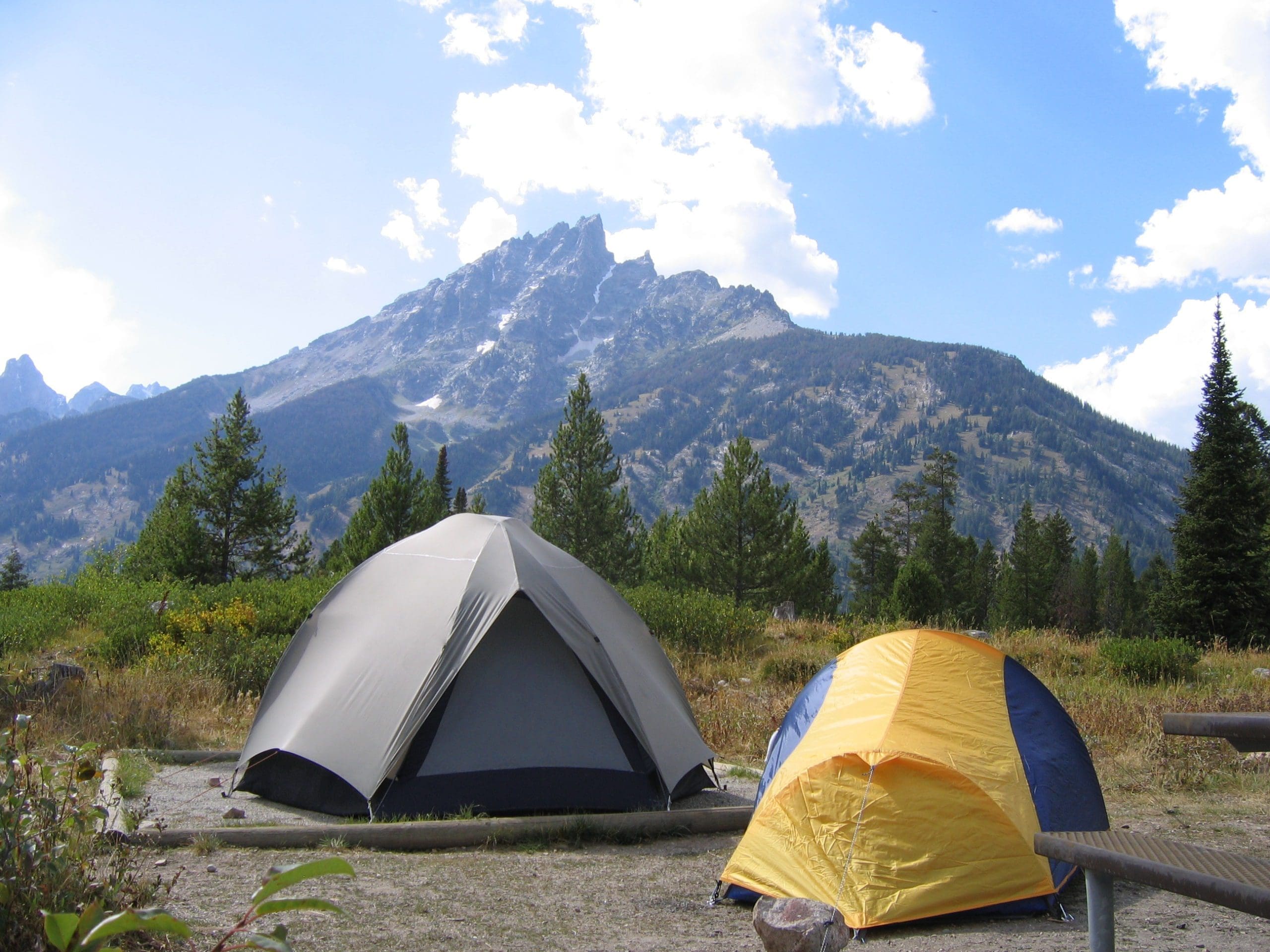
Our second suggestion is for tent campers only. The Jenny Lake Campground is a small campground a few hundred yards from the east shore of Jenny Lake. The campground straddles a glacial moraine covered with an open forest of lodgepole pine, subalpine fir and Douglas fir.22
Across the lake, Teewinot Mountain, Cascade Canyon and Mount St. John dominate the landscape. No trailers, campers, or generators are allowed. Vehicles cannot be over 8 feet high or 14 feet long. Maximum per site is one tent, one vehicle, and six guests for up to 7 nights.22
For more information on Jenny Lake Campground, check out the Discover Our Parks page about it here and the NPS page here.
SPONSORED ADVERTISEMENT
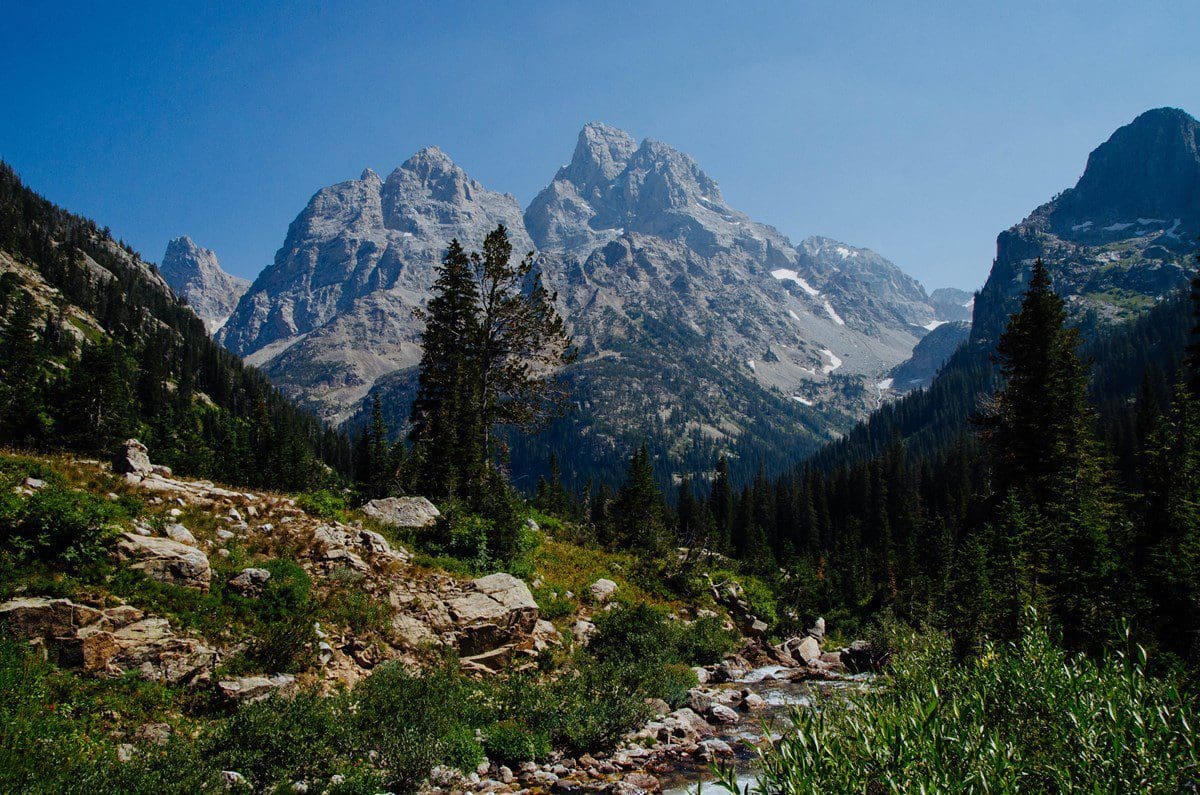
If you are looking for an adventure filled, multi day trip, backpacking might be your best option to explore the park!
Grand Teton National Park has an extensive backcountry. With multiple hiking options and various designated campgrounds, this park is perfect for those looking to get away from the crowds and truly take an adventure.
The Teton Crest Trail is a favorite and a great way to experience this wilderness. Including the North Fork Cascade Canyon, Lake Solitude, and Paintbrush Canyon Trails, there are 7 designated camping areas along this world class 45 mile long trail.
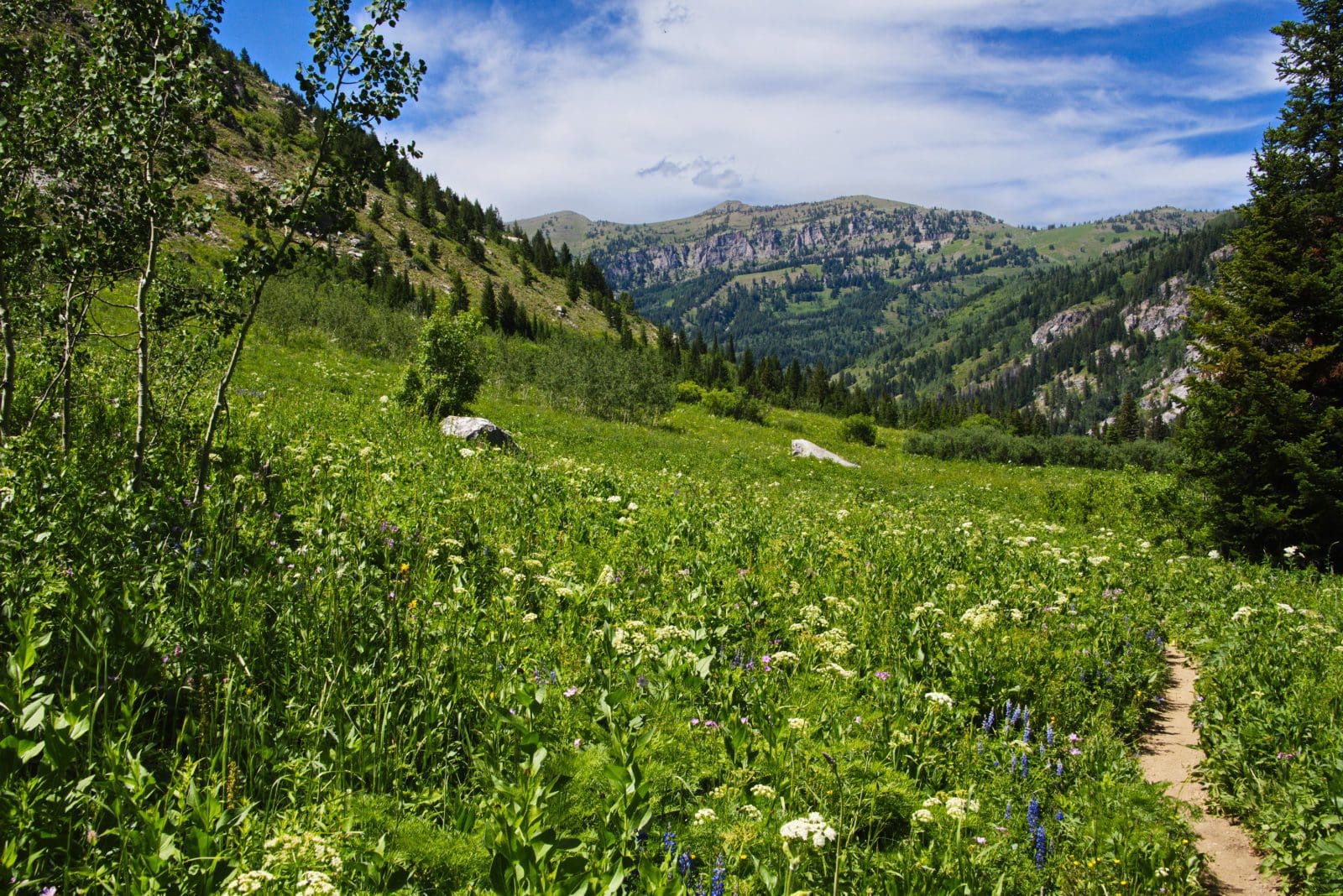
Another slightly side trip, but a favorite for local backcountry enthusiasts is the Alaska Basin area. This part of the Tetons is actually just outside the park in the Jedediah Smith Wilderness. It is not as strenuous of a hike compared to the previous suggestion but is a beautiful area to enjoy. The Alaska Basin is a beautiful high elevation basin that holds a few lakes with amazing views. It’s a favorite for hikers that want to do the “up and over” into Grand Teton National Park.23
If you are planning a backpacking trip, remember backcountry camping is only permitted in designated areas. Make sure to reserve a Backcountry Camping Permit through Recreation.gov if you plan to do this and always share your plans with others, incase of an emergency.
Also, remember this is Bear Country. Bear Canisters are required and are obtained from the park. For more information on safety in bear country see the link below on backcountry camping.
For more information on backcountry hiking and camping, check out the NPS Backcountry Camping page here.
Are you looking for a true adventure and want to combine floating with backcountry camping in Grand Teton National Park? If so, check out this great guide to help you find the best spots on Jackson and Leigh Lakes:
Canoe Camping in Grand Teton National Park: A Guide to the Backcountry Campsites on Jackson and Leigh Lakes
For more information about Grand Teton National Park, our May 2021 – Park of the Month, and to plan your trip, visit our park page, which includes specific information about the park status in regards to COVID-19. Be sure to check out the more detailed About the Park page with great information from the park.
Remember when visiting any National Park, whether camping, hiking or just visiting a visitors center, always do your part and follow the Leave No Trace principles to help protect the park. Learn more here!
Have you been to Grand Teton National Park or have a comment regarding our choice? Let us know below in the comments section.
Help support Discover Our Parks by becoming a Patron for as little as $1 a month! Your support will help us continue to provide articles like this and add even more information about our parks to this site.
If you want to make a one-time donation, buy us a coffee!
‘We got some of the above information from the following:
1: NPS – Grand Teton NP – Geologic Activity
2: NPS – Grand Teton NP – Plan Your Visit
3: NPS – Grand Teton NP – Scenic Drives
4: NPS – Grand Teton NP – Teton Park Road
5: NPS – Grand Teton NP – Oxbow Bend
6: NPS – Grand Teton NP – Snake River Overlook
7: NPS – Grand Teton NP – Moose-Wilson Road
8: NPS – Grand Teton NP – Laurance S. Rockefeller Preserve Center
9: NPS – Grand Teton NP – Jackson Hole Mountain Resort Aerial Tram Trailhead
10: NPS – Grand Teton NP – Boating and Floating
11: NPS – Grand Teton NP – Hermitage Point
12: NPS – Grand Teton NP – Taggart Lake – Bradley Lake Loop Trail
13: NPS – Grand Teton NP – Surprise and Amphitheater Lakes
14: NPS – Grand Teton NP – Leigh Lake
15: NPS – Grand Teton NP – Signal Mountain Trail
16: NPS – Grand Teton NP – Forks of Cascade Canyon
17: NPS – Grand Teton NP – Lake Solitude
18: NPS – Grand Teton NP – Paintbrush Canyon – Cascade Canyon Loop
19: NPS – Grand Teton NP – Mountaineering Brochure
20: Jackson Lake Lodge
21: NPS – Grand Teton NP – Colter Bay Campground
22: NPS – Grand Teton NP – Jenny Lake Campground
23: Caribou-Targhee National Forest – Alaska Basin
24: NPS – Grand Teton NP – ???
Check out these recent posts from Discover Our Parks:
- The Isolated Black-bellied Salamander: Wildlife of the Week – 2023 Week 22
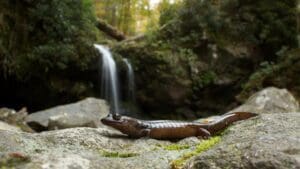
- The Splendid Sandhill Crane: Wildlife of the Week – 2023 Week 21
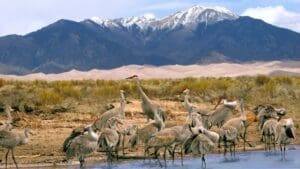
- The Promising Peregrine Falcon: Wildlife of the Week – 2023 Week 20
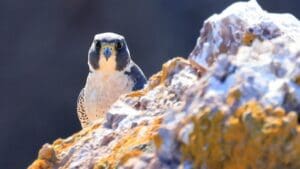
- The Intimidating Killer Whale: Wildlife of the Week – 2023 Week 19
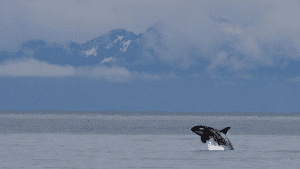
- The Swift Fox: Wildlife of the Week – 2023 Week 18
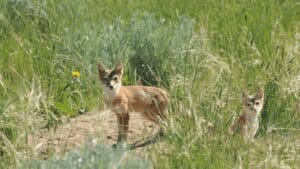
SPONSORED ADVERTISEMENT

